Search Result
Results for "
brain penetrate
" in MedChemExpress (MCE) Product Catalog:
1
Biochemical Assay Reagents
5
Isotope-Labeled Compounds
| Cat. No. |
Product Name |
Target |
Research Areas |
Chemical Structure |
-
- HY-101188
-
|
|
Histamine Receptor
|
Infection
|
|
INCB38579 is an orally active, highly brain penetrable, and selective histamine H4 receptor (HH4R) antagonist (hH4R IC50=4.8 nM, mH4R IC50=42 nM, rH4R IC50=32 nM). INCB38579 shows anti-inflammatory pain and anti-pruritic activities .
|
-
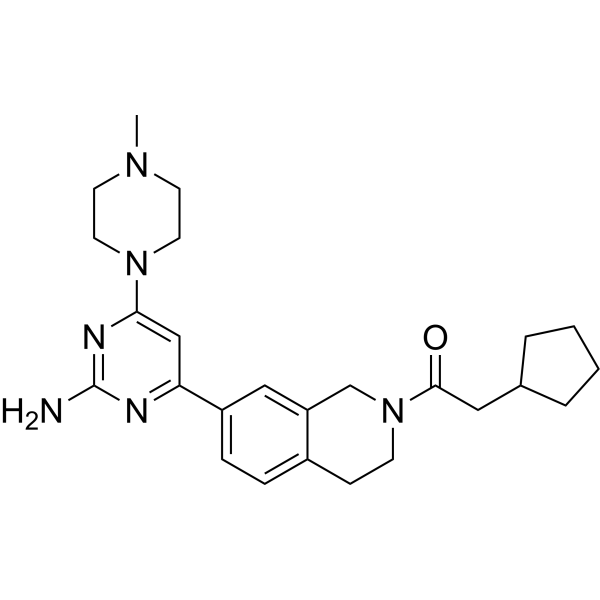
-
- HY-103253
-
|
|
Others
|
Neurological Disease
|
|
LY231617 is a potent and blood-brain barrier penetrable antioxidant. LY231617 is a neuroprotective agent in brain, it can be used for the research of nervous disease .
|
-
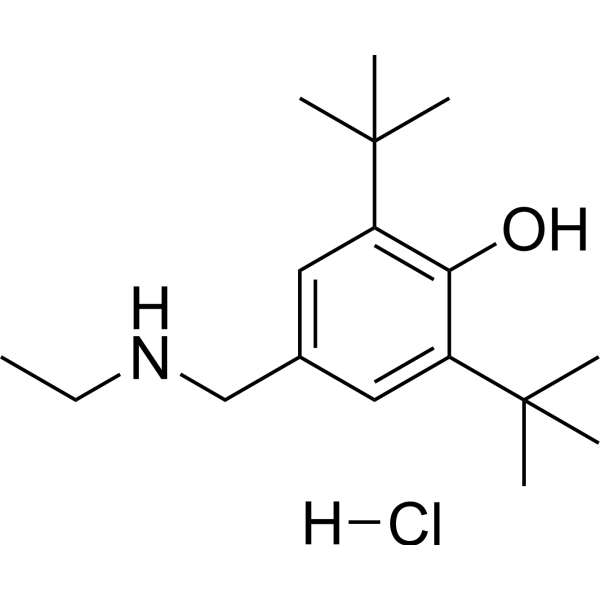
-
- HY-119624
-
|
|
PIKfyve
|
Cancer
|
|
MOMIPP, a macropinocytosis inducer, is a PIKfyve inhibitor. MOMIPP penetrates the blood-brain barrier (BBB) .
|
-
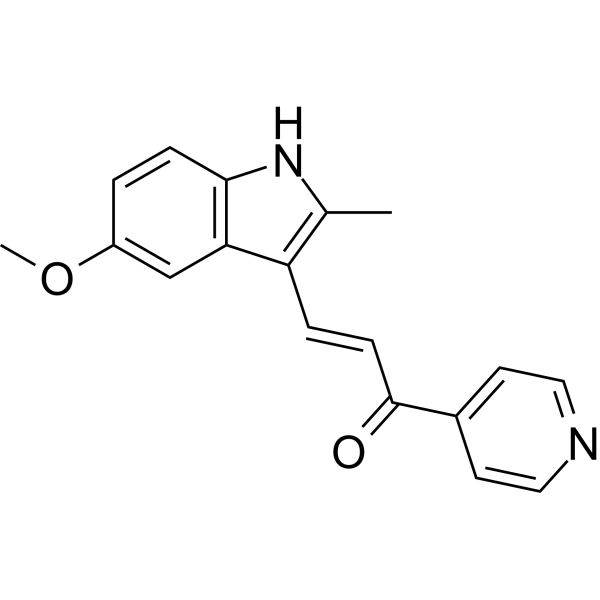
-
- HY-128351
-
-

-
- HY-134228
-
-
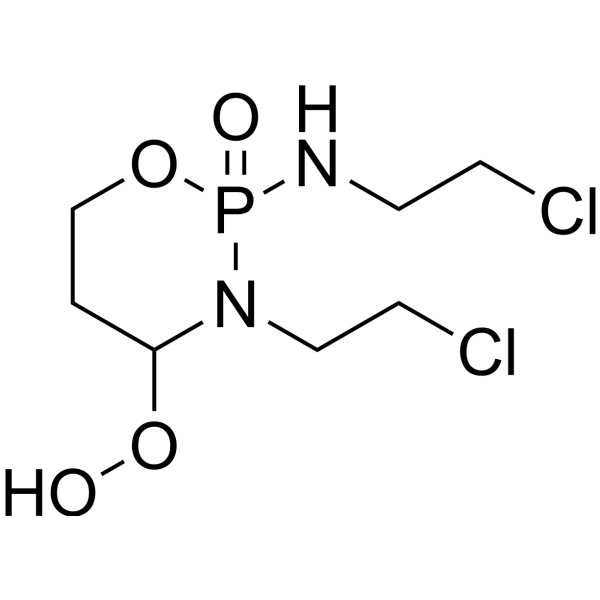
-
- HY-153432
-
|
|
Cholinesterase (ChE)
|
Neurological Disease
|
|
TRV-7019 is a BBB-penetrable radioligand for brain imaging that target butyrylcholinesterase. TRV-7019 can be used for the diagnosis of an amyloid disease, multiple sclerosis, a brain tumor, or butyrylcholinesterase activity .
|
-
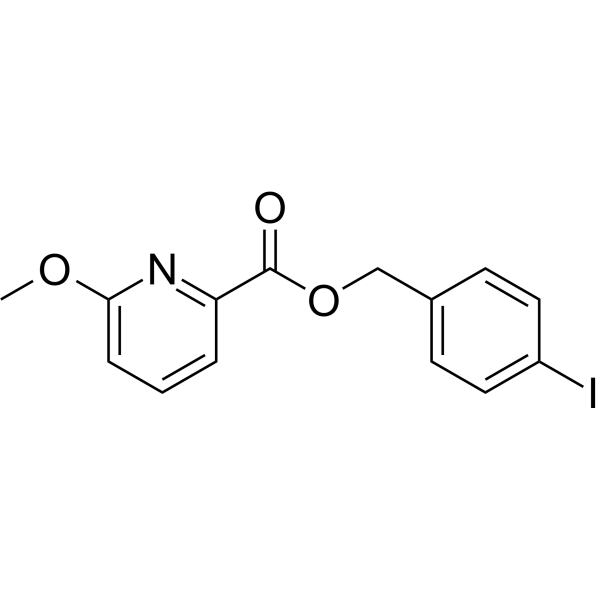
-
- HY-14130
-
-

-
- HY-103379
-
-

-
- HY-116477
-
|
|
FAAH
|
Neurological Disease
Inflammation/Immunology
|
|
URB937 is an orally active and peripherally restricted FAAH inhibitor (IC50=26.8 nM) and increases anandamide levels. URB937 fails to affect FAAH activity in the brain (not penetrate the blood-brain barrier) .
|
-

-
- HY-106000
-
|
|
Histamine Receptor
|
Neurological Disease
|
|
GSK239512 is a potent and brain penetrated H3 receptor antagonist. GSK239512 can be used for the research of mild-to-moderate Alzheimer's disease (AD) .
|
-
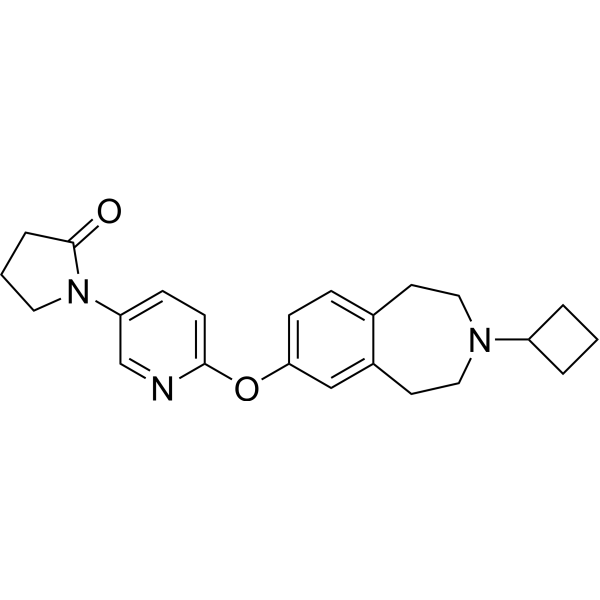
-
- HY-153175
-
|
|
RET
|
Neurological Disease
|
|
BT44 is a selective RET activator. BT44 can penetrate through the blood-brain barrier and can be used for the research of neurodegenerative disorders and diabetes mellitus .
|
-
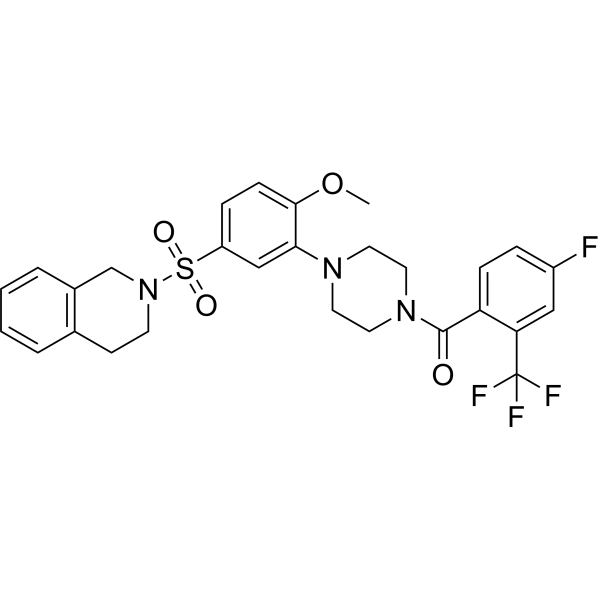
-
- HY-131204
-
|
|
Caspase
|
Neurological Disease
|
|
CZL80, a brain-penetrable caspase-1 inhibitor with an IC50 of 0.01 μM, could be used in the study of febrile seizures and later enhanced epileptogenic susceptibility .
|
-
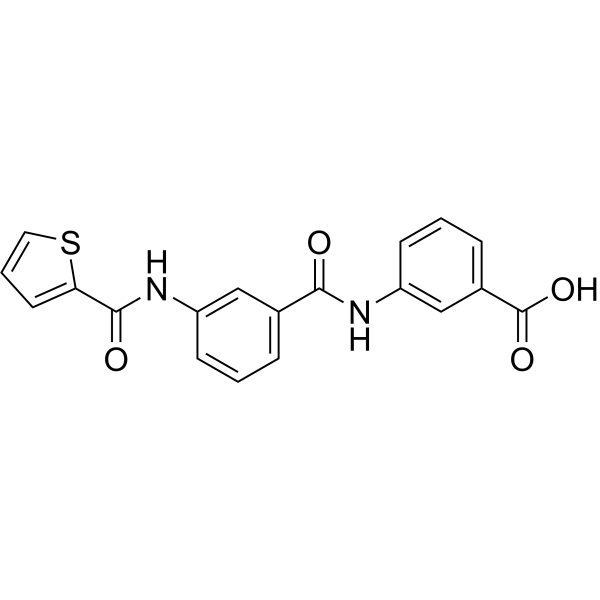
-
- HY-108295
-
|
CXB-722
|
GABA Receptor
|
Neurological Disease
|
|
Pivagabine (CXB 722) is a hydrophobic 4-aminobutyric acid derivative with neuromodulatory activity. Pivagabine penetrates the blood-brain barrier in rats. Pivagabine antagonizes the effects of foot shock on both GABAA receptor function and corticotropin-releasing factor (CRF) concentrations in rat brain .
|
-
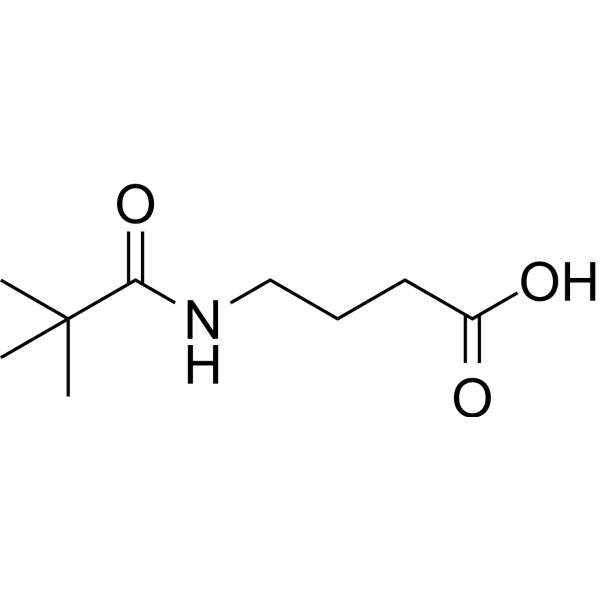
-
- HY-121599
-
|
SGS-742
|
GABA Receptor
|
Neurological Disease
|
|
CGP 36742 is a selective GABAB receptor antagonist that can penetrate the blood–brain barrier after peripheral administration, with an IC50 of 32 μM. CGP 36742 is useful in treatment of depression .
|
-
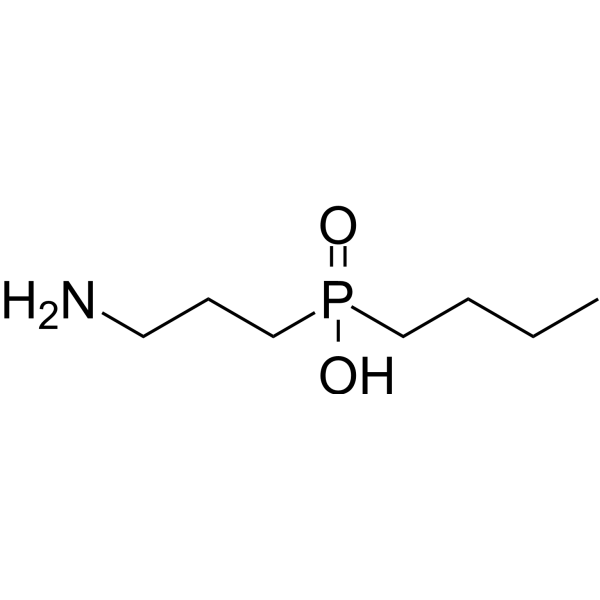
-
- HY-106147
-
|
|
Opioid Receptor
|
Neurological Disease
|
|
Frakefamide is a potent analgesic that acts as a peripheral active μ-selective receptor agonist. Frakefamide is unable to penetrate the blood-brain-barrier and enter the central nervous system .
|
-
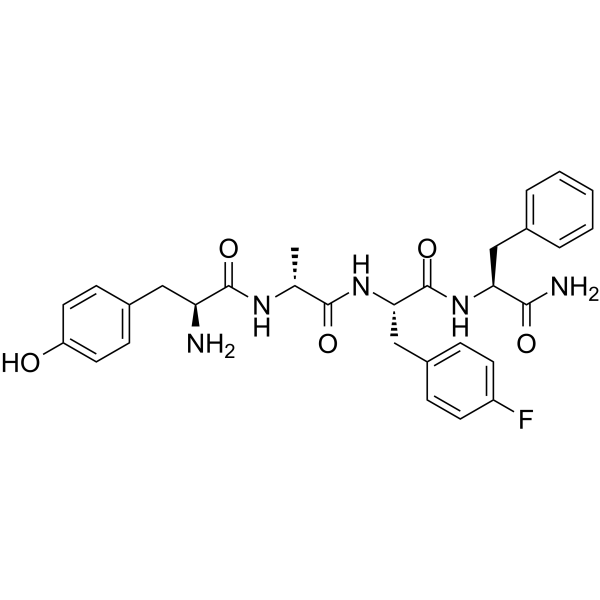
-
- HY-113643
-
|
|
Calcium Channel
5-HT Receptor
|
Neurological Disease
|
|
Levemopamil hydrochloride is a blood-brain barrier penetrable calcium channel blocker and a 5-HT2 antagonist. Levemopamil hydrochloride can be used for temporary occlusion and neurological disease research .
|
-
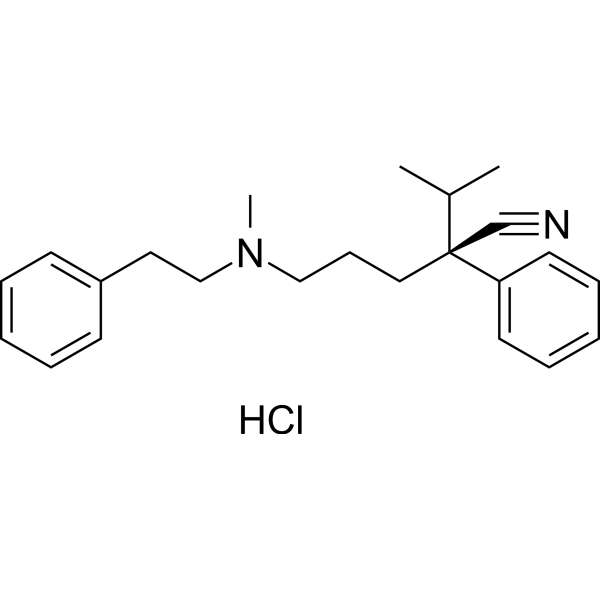
-
- HY-107531
-
|
|
GSK-3
|
Cancer
|
|
A 1070722 is a potent and selective glycogen synthase kinase 3 (GSK-3) inhibitor, with a Ki of 0.6 nM for both GSK-3α and GSK-3β. A 1070722 can penetrate the blood-brain barrier (BBB) and accumulates in brain regions, thus potential for PET radiotracer for the quantification of GSK-3 in brain .
|
-
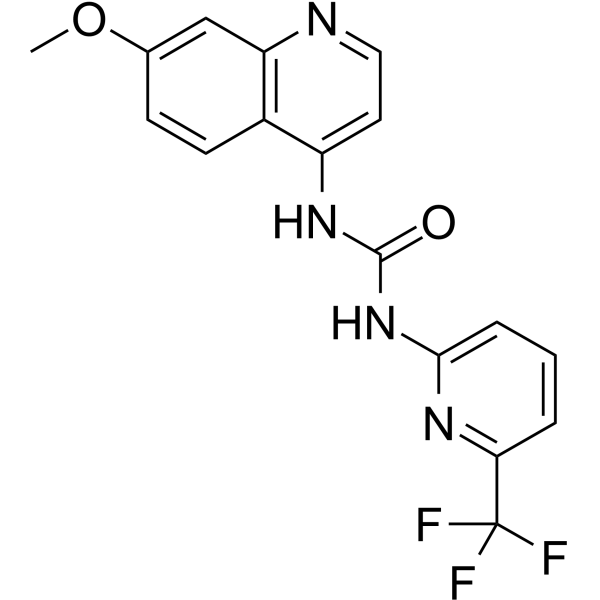
-
- HY-106147B
-
|
|
Opioid Receptor
|
Neurological Disease
|
|
Frakefamide TFA is a potent analgesic that acts as a peripheral active μ-selective receptor agonist. Frakefamide is unable to penetrate the blood-brain-barrier and enter the central nervous system .
|
-
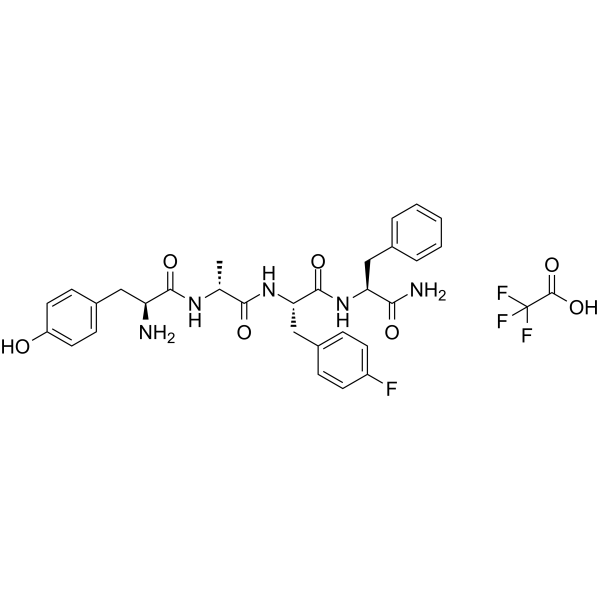
-
- HY-119953
-
|
|
mAChR
|
Neurological Disease
|
|
BIBN-99 is a selective, BBB-penetrable and competitive muscarinic M2 receptor antagonist. BIBN-99 improves cognitive performancein rats with traumatic brain injury .
|
-
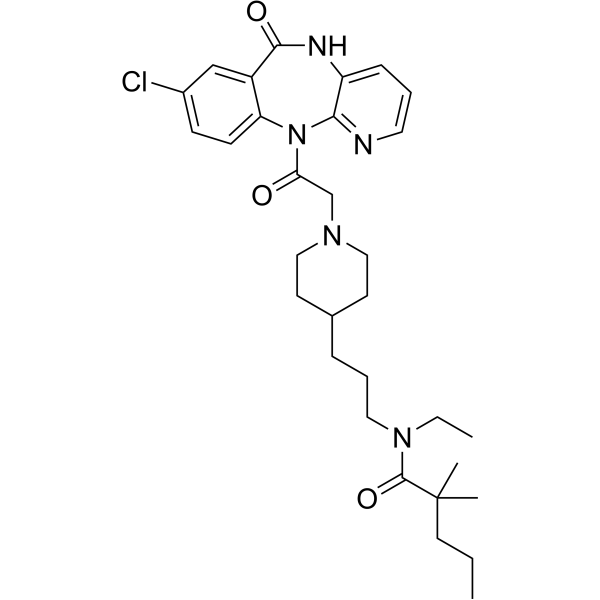
-
- HY-161090
-
|
|
iGluR
|
Neurological Disease
|
|
AMPA receptor modulator-7 (compound 36) is a modulator of AMPA receptor. AMPA receptor modulator-7 has oral activity and can penetrate the blood-brain barrier .
|
-
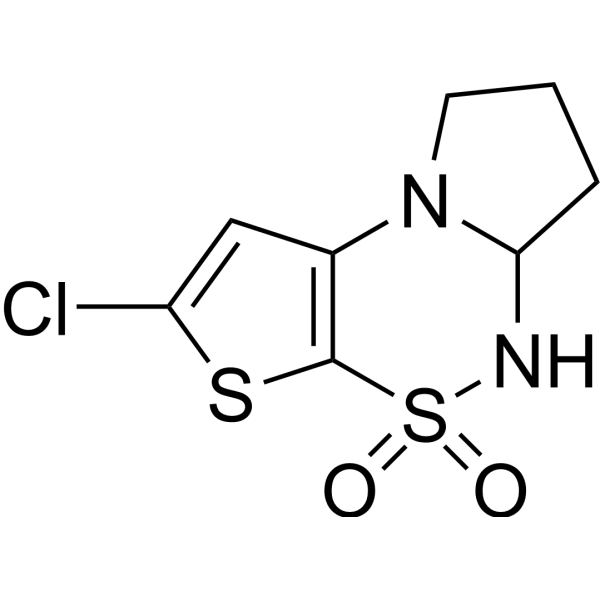
-
- HY-13909
-
RGFP966
Maximum Cited Publications
30 Publications Verification
|
HDAC
|
Cancer
|
|
RGFP966 is a highly selective HDAC3 inhibitor with an IC50 of 80 nM and shows no inhibition to other HDACs at concentrations up to 15 μM. RGFP966 can penetrate the blood brain barrier (BBB).
|
-
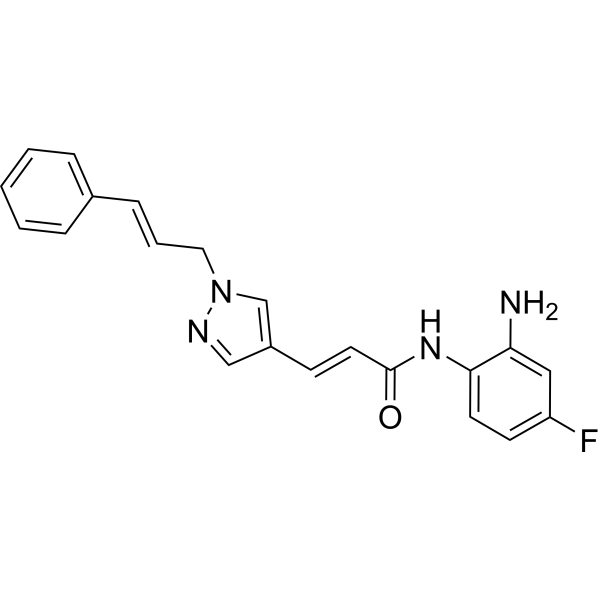
-
- HY-103242
-
|
|
Amyloid-β
|
Neurological Disease
|
|
CRANAD-2 is a near-infrared (NIR) Aβ plaque-specific fluorescent probe. CRANAD 2 penetrates the blood brain barrier and has a high affinity for Aβ aggregates with a Kd of 38 nM .
|
-

-
- HY-146334
-
|
|
Chloride Channel
|
Inflammation/Immunology
|
|
DFBTA is an orally active, potent and little brain penetrated ANO1 (Calcium-activated chloride channel anoctamin-1) inhibitor, with an IC50 of 24 nM. DFBTA shows analgesic efficacy for inflammatory pain .
|
-
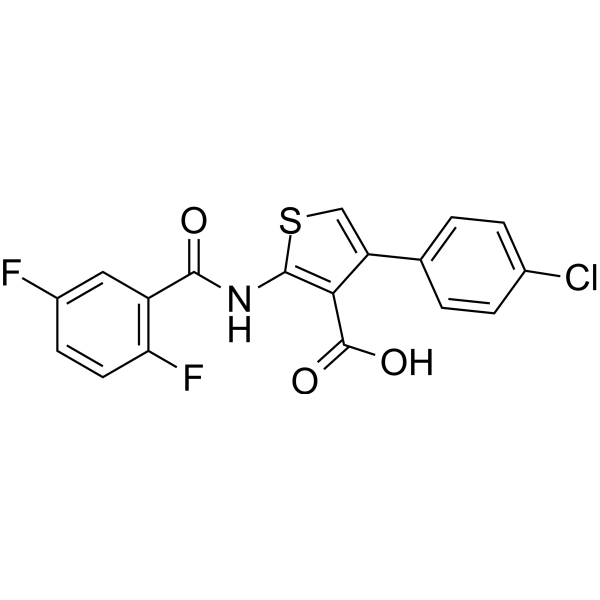
-
- HY-132310
-
|
|
MAGL
|
Neurological Disease
|
|
MAGL-IN-4 is an orally active, selective and reversible monoacylglycerol lipase (MAGL) inhibitor with an IC50 of 6.2 nM. MAGL-IN-4 can penetrate the blood-brain barrier (BBB). MAGL-IN-4 enhances endocannabinoid signaling mostly by the increase in the level of 2-AG via selective MAGL inhibition in the brain .
|
-

-
- HY-120085
-
PFE-360
2 Publications Verification
PF-06685360
|
LRRK2
|
Neurological Disease
|
|
PFE-360 (PF-06685360) is a potent, selective, brain penetrated and orally active leucine-rich repeat kinase 2 (LRRK2) inhibitor with a mean IC50 of 2.3 nM in vivo .
|
-
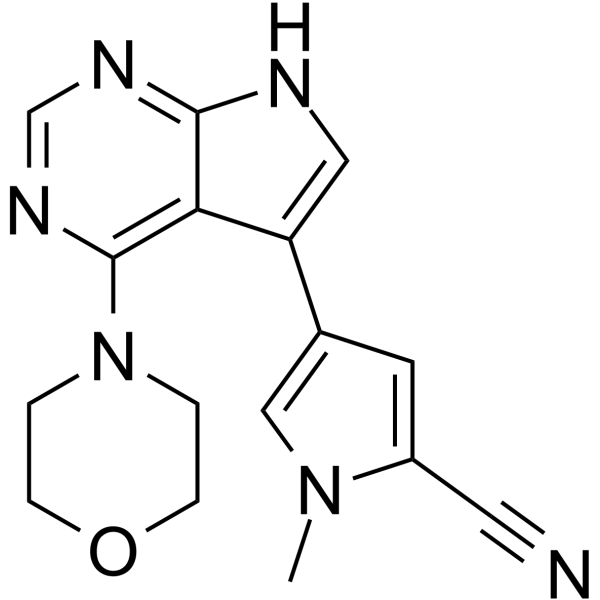
-
- HY-131703
-
|
|
UGT
|
Metabolic Disease
|
|
UGT8-IN-1 is a brain penetrable and orally active inhibitor of ceramide galactosyltransferase enzyme (UGT8). UGT8-IN-1 can be used in the study for lysosomal storage disorders .
|
-
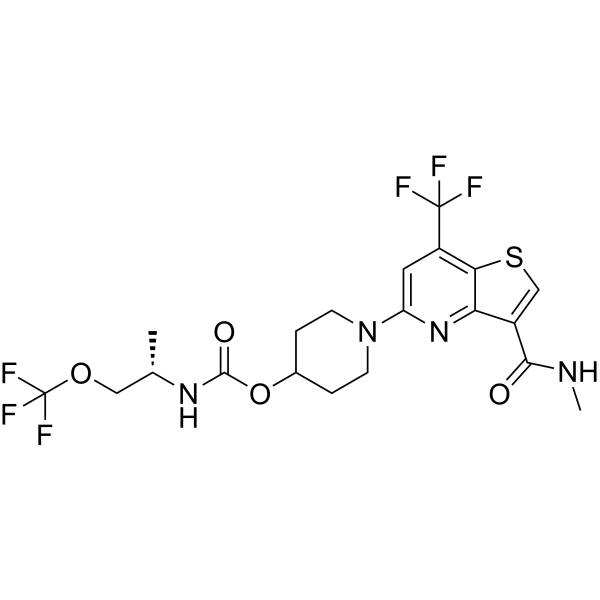
-
- HY-14136
-
-
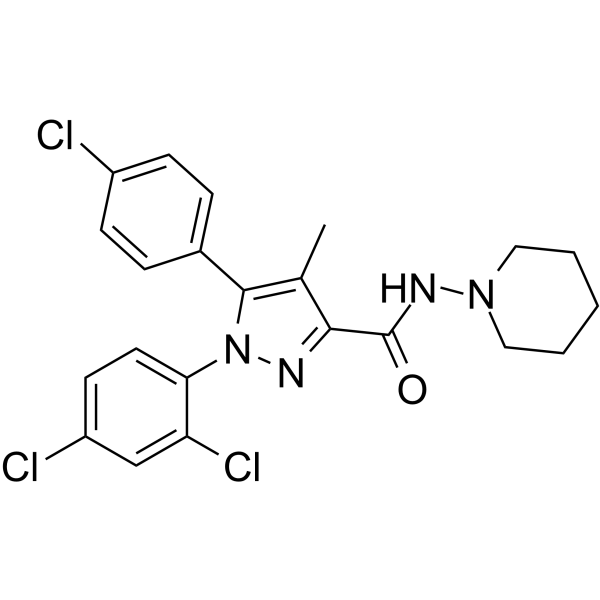
-
- HY-128349
-
|
|
Phosphodiesterase (PDE)
|
Neurological Disease
|
|
MT-3014 is a potent, highly selective and brain-penetrated phosphodiesterase 10A (PDE 10A) inhibitor, with IC50s of 0.062 nM and 0.09 nM for human PDE 10A and bovine PDE 10A, respectively .
|
-
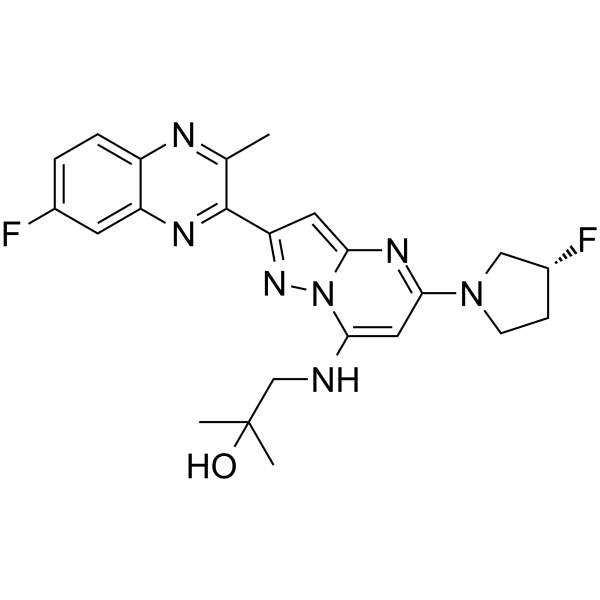
-
- HY-136146
-
|
|
nAChR
|
Neurological Disease
|
|
SUVN-911 is a potent, selective, brain penetrated and orally bioavailable neuronal nicotinic acetylcholine α4β2 receptor antagonist, with a Ki of 1.5 nM. SUVN-911 has antidepressant activity .
|
-
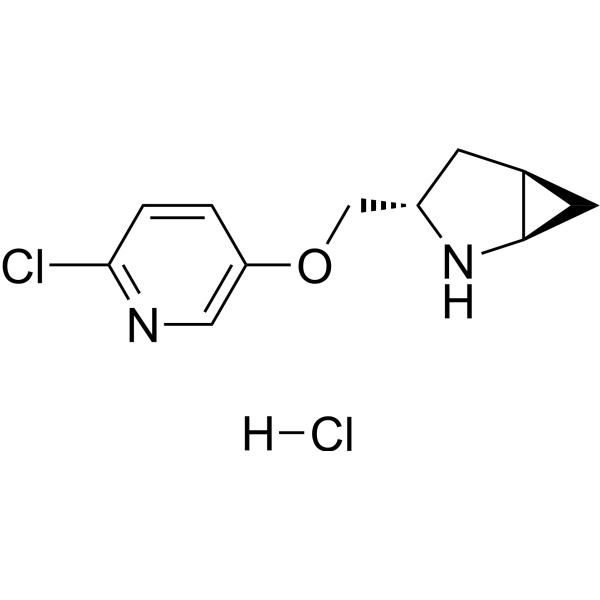
-
- HY-10900
-
-
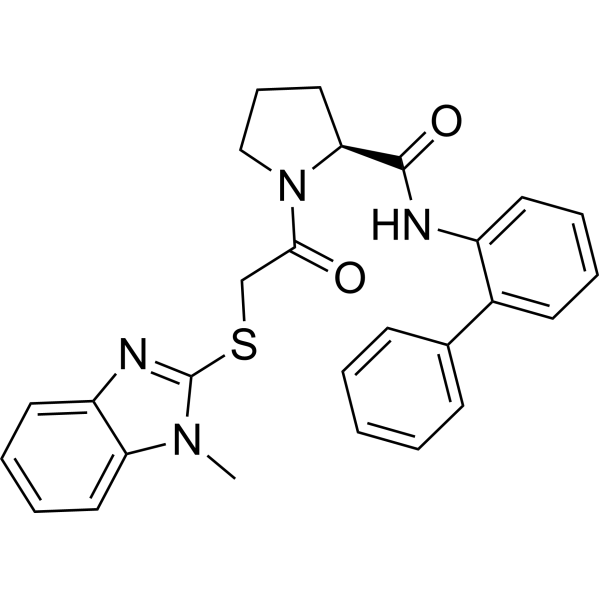
-
- HY-B0186
-
|
|
Bacterial
Antibiotic
|
Infection
|
|
Cefoselis, the fourth gen-eration of cephalosporin, is a β-lactam antibiotic. Cefoselis exhibits good activity against a wide range of Gram-positive and Gram-negative organisms. Cefoselis penetrates the blood-brain barrier .
|
-
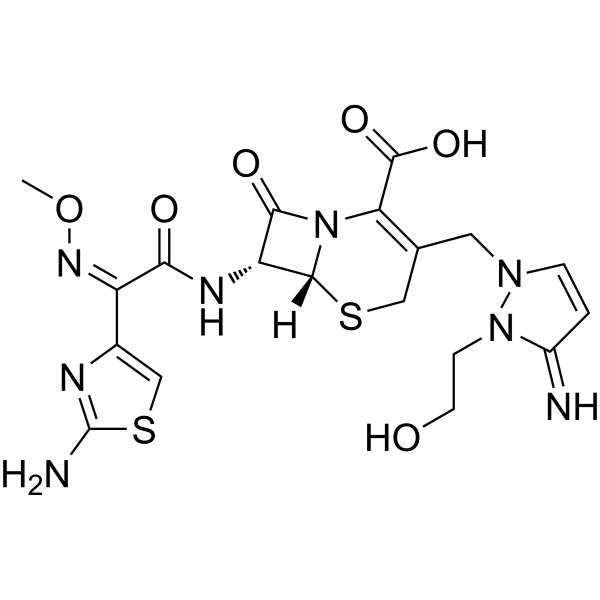
-
- HY-B0186A
-
|
|
Bacterial
Antibiotic
|
Infection
|
|
Cefoselis hydrochloride, the fourth gen-eration of cephalosporin, is a β-lactam antibiotic. Cefoselis hydrochloride exhibits good activity against a wide range of Gram-positive and Gram-negative organisms. Cefoselis hydrochloride penetrates the blood-brain barrier .
|
-
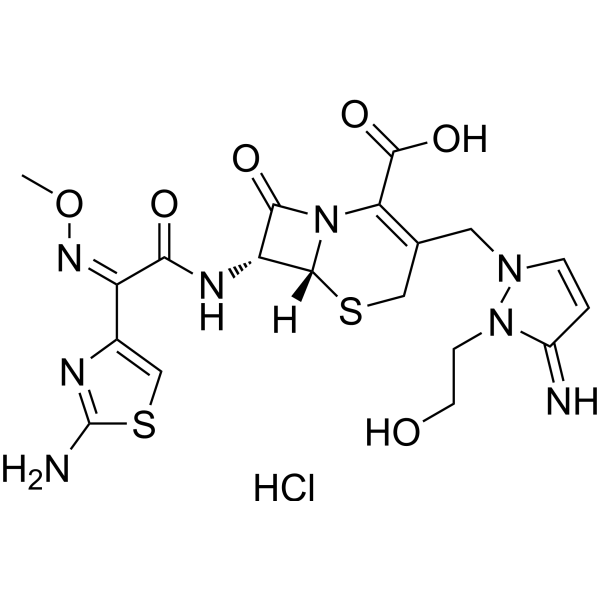
-
- HY-N1501
-
|
|
Others
|
Neurological Disease
Inflammation/Immunology
|
|
Beta-asarone is a major ingredient of Acorus tatarinowii Schott, penetrates blood brain barrier, with the properties of
immunosuppression, central nervous system inhibition, sedation, and hypothermy. Beta-asarone protects against Parkinson’s disease .
|
-
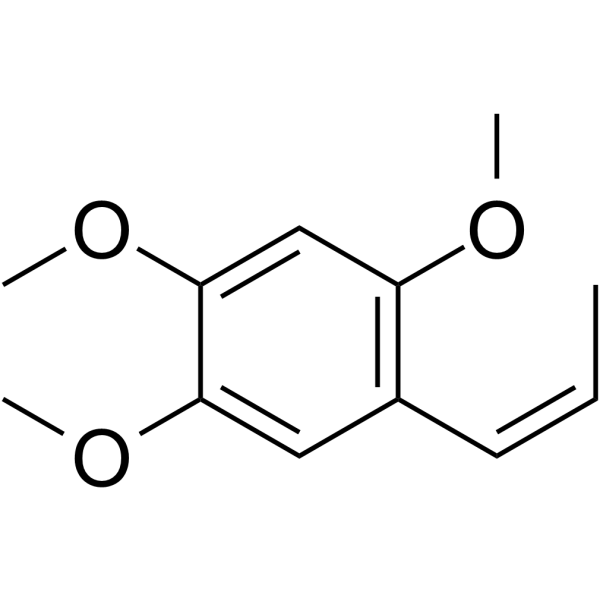
-
- HY-N4134
-
|
|
NO Synthase
|
Inflammation/Immunology
|
|
Ciwujianoside C3, an orally active and brain penetrated compound, is isolated the leaves of Acanthopanax henryi Harms. Ciwujianoside C3 has anti-inflammatory effect and can reinforces object recognition memory .
|
-
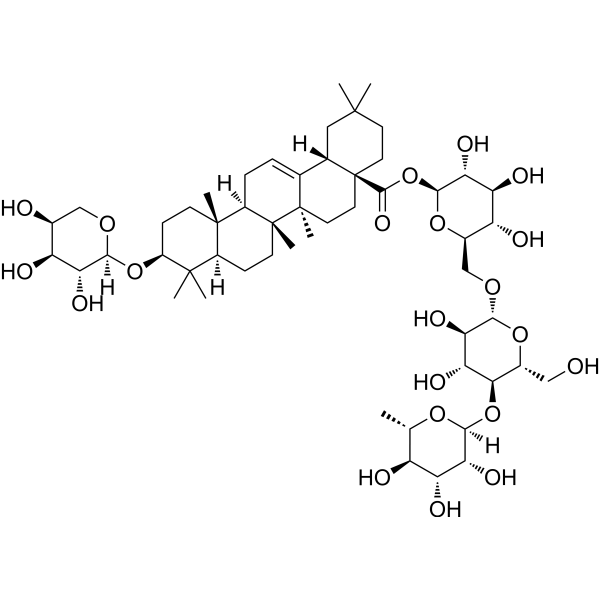
-
- HY-100605
-
|
|
mGluR
|
Others
|
|
VU0483605 is a potent and brain-penetrated mGlu1 receptor positive allosteric modulator (PAM). VU0483605 shows excellent mGlu1 PAM activity at both human and rat, with EC50 values of 390 and 356 nM, respectively .
|
-
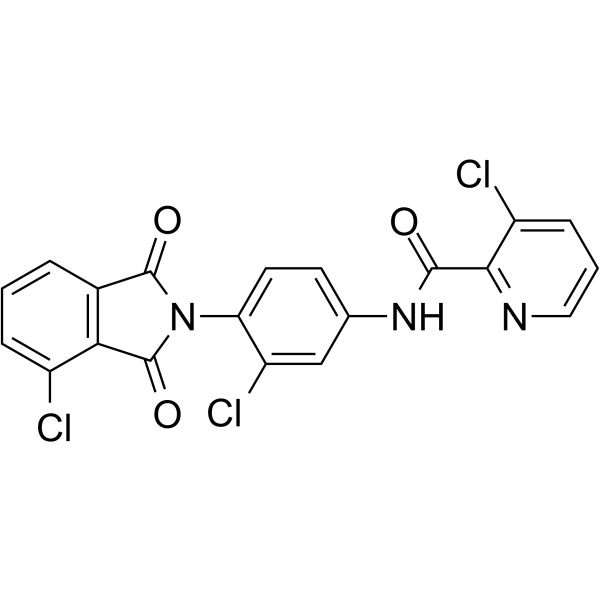
-
- HY-156842
-
|
|
Amyloid-β
|
Neurological Disease
|
|
MCAAD-3 is a near-infrared Aβ imaging probe with blood-brain barrier penetrability. MCAAD-3 has a strong affinity for Aβ polymers (Ki >106 nM) and can label Aβ plaques in the brains of transgenic mice .
|
-
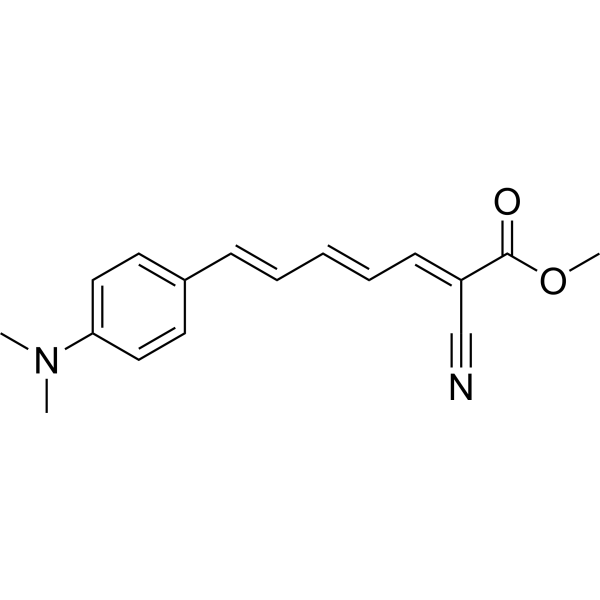
-
- HY-101059
-
|
|
|
|
|
FGIN 1-27, an indoleacetamide, is a specific peripheral benzodiazepine receptor (PBR) ligand with a Ki of 5.0 nM. FGIN 1-27 can penetrate the blood brain barrier (BBB). FGIN 1-27 inhibits the onset of Isoniazid-induced convulsions .
|
-
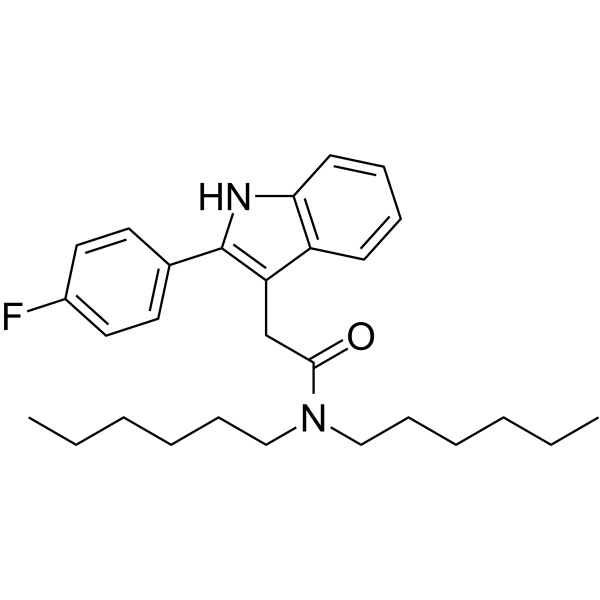
-
- HY-111540
-
|
IDO1-IN-5
|
Indoleamine 2,3-Dioxygenase (IDO)
|
Cancer
|
|
LY-3381916 (IDO1-IN-5) is a potent, selective and brain penetrated inhibitor of IDO1 activity, binds to apo-IDO1 lacking heme rather than mature heme-bound IDO1 .
|
-
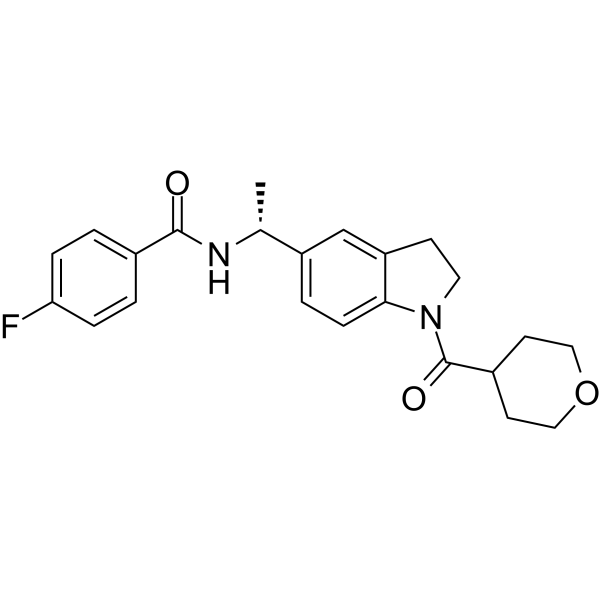
-
- HY-143877
-
|
|
HDAC
|
Cancer
|
|
NN-390 is a potent and selective HDAC6 inhibitor, with an IC50 of 9.8 nM. NN-390 penetrates the blood-brain barrier (BBB). NN-390 shows study potential in metastatic Group 3 MB (medulloblastoma) .
|
-

-
- HY-114452
-
|
BTRX-246040
|
Opioid Receptor
|
Neurological Disease
|
|
LY2940094 (BTRX-246040) is a potent, selective and orally available nociceptin receptor (NOP receptor) antagonist with high affinity (Ki=0.105 nM) and antagonist potency (Kb=0.166 nM). LY2940094 reduces ethanol self-administration in animal models .
|
-

-
- HY-114452A
-
|
BTRX-246040 tartrate
|
Opioid Receptor
|
Neurological Disease
|
|
LY2940094 (BTRX-246040) tartrate is a potent, brain penetrant, selective and orally available N/OFQ peptide (NOP) receptor antagonist with high affinity (Ki=0.105 nM) and antagonist potency (Kb=0.166 nM). LY2940094 tartrate reduces Ethanol self-administration and Ethanol seeking in animal models .
|
-
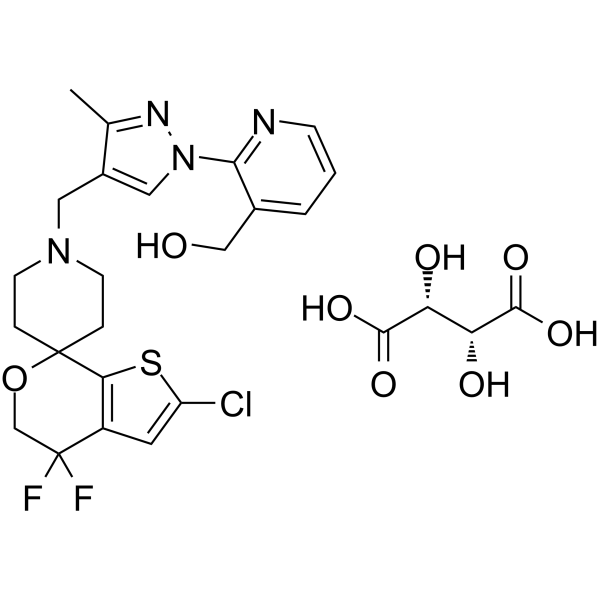
-
- HY-110180
-
|
|
mGluR
|
Neurological Disease
|
|
VU0409106 is a potent and selective mGlu5 negative allosteric modulator (NAM) with an IC50 of 24 nM. VU0409106 shows anxiolytic effects in rat models in a concentration-dependent manner. VU0409106 also penetrates the blood-brain barrier (BBB) .
|
-
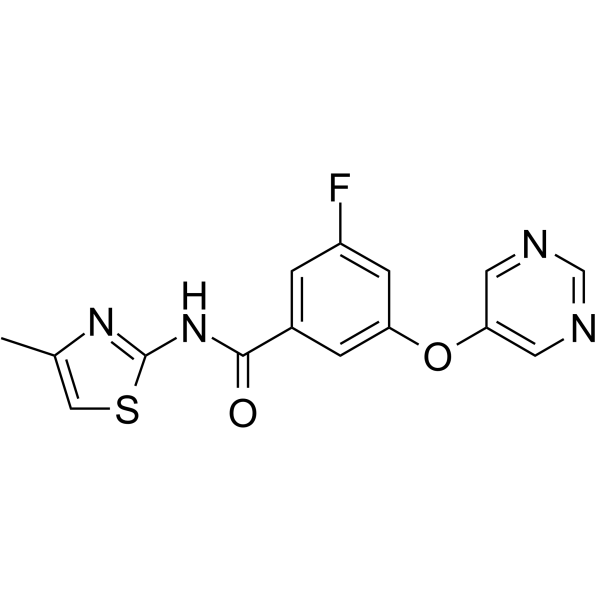
-
- HY-D0873
-
|
EPPS
|
Amyloid-β
|
Neurological Disease
|
|
HEPPS (EPPS) is a buffering agent with the useful pH range from 7.3 ~ 8.7. HEPPS reduces Aβ-aggregate-induced memory deficits and rescues cognitive deficits in mice. EPPS is orally active and penetrates the blood-brain barrier .
|
-
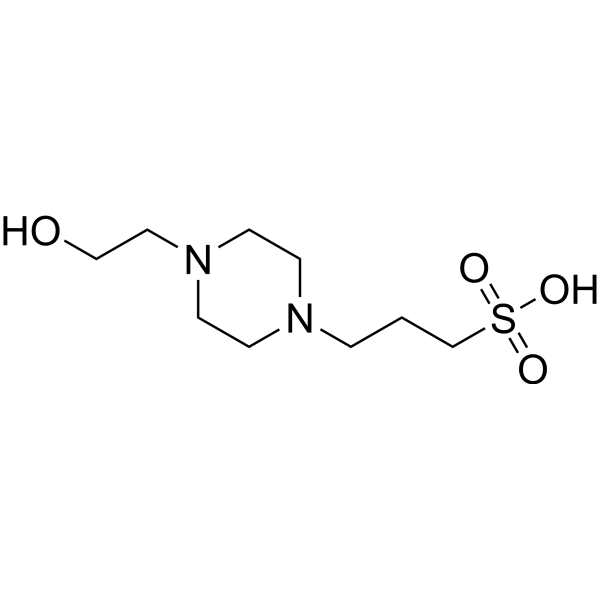
-
- HY-18236
-
|
Calpain Inhibitor III
|
Proteasome
|
Neurological Disease
Inflammation/Immunology
|
|
MDL-28170 (Calpain Inhibitor III) is a potent, selective and membrane-permeable cysteine protease inhibitor of calpain that rapidly penetrates the blood-brain barrier following systemic administration . MDL-28170 also block γ-secretase .
|
-
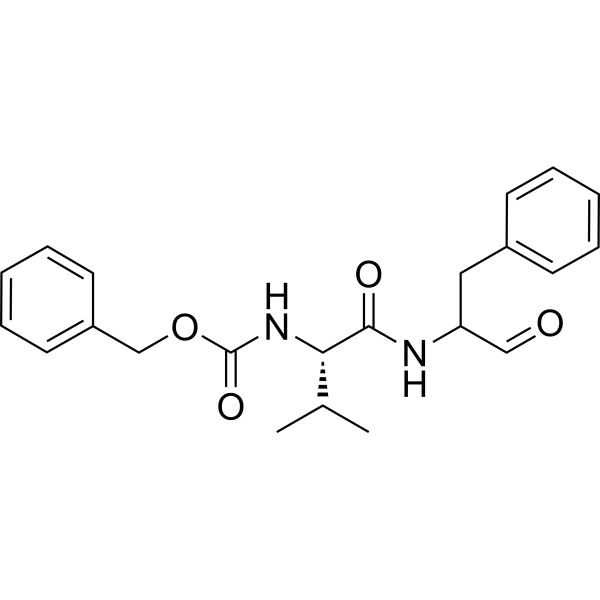
-
- HY-P4073
-
|
GRN1005; Paclitaxel trevatide
|
Antibody-Drug Conjugates (ADCs)
|
Cancer
|
|
ANG1005 (Paclitaxel trevatide) is a brain-penetrating peptide-drug conjugate. ANG1005, a taxane derivative, consists of three paclitaxel (HY-B0015) molecules covalently linked to Angiopep-2, designed to cross the blood-brain and blood-cerebrospinal barriers and to penetrate malignant cells via low density lipoprotein receptor-related protein (LRP1) transport system .
|
-

-
- HY-B0186B
-
|
FK-037
|
Bacterial
Antibiotic
|
Infection
|
|
Cefoselis sulfate (FK-037), the fourth gen-eration of cephalosporin, is a β-lactam antibiotic. Cefoselis sulfate exhibits good activity against a wide range of Gram-positive and Gram-negative organisms. Cefoselis sulfate penetrates the blood-brain barrier .
|
-
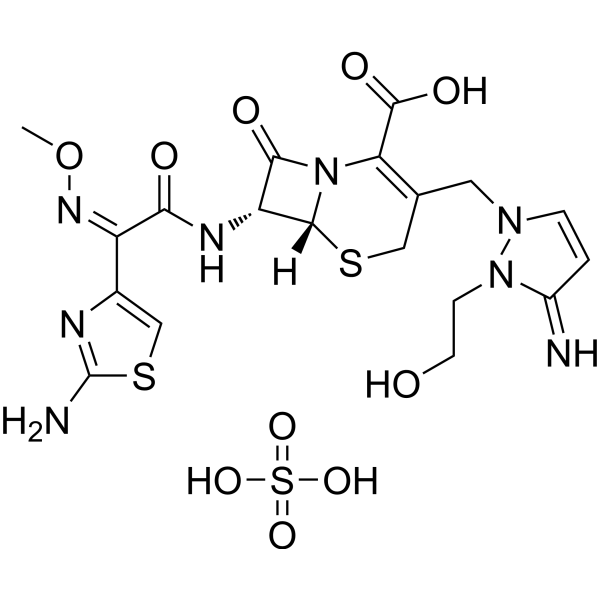
-
- HY-14136S
-
-

-
- HY-149025
-
|
P18
|
Phospholipase
|
Inflammation/Immunology
|
|
DPTIP-proagent 18 (P18) is a orally active and brain-penetrable proagent of DPTIP (HY-131002). DPTIP-proagent 18 is a potent nSMase2 inhibitor. DPTIP-proagent 18 significantly inhibits IL-1β-induced EV (extracellular vesicle) release by inhibition of nSMase2 (neutral sphingomyelinase-2) activity. DPTIP-proagent 18 can be used for brain injury research .
|
-
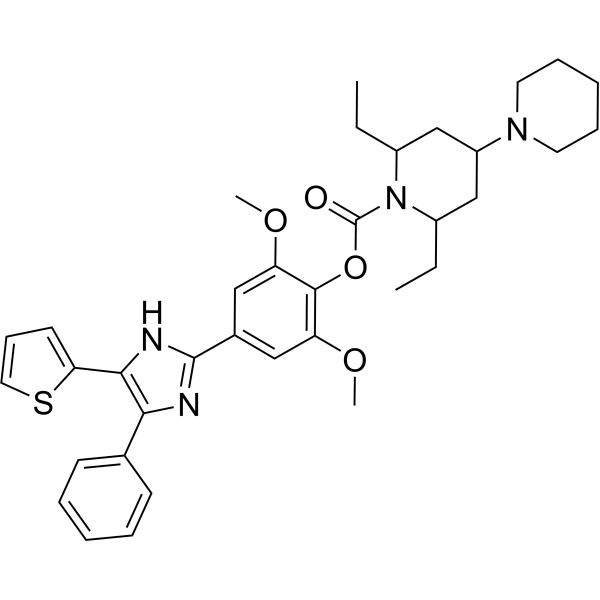
-
- HY-107623
-
|
|
MCHR1 (GPR24)
|
Metabolic Disease
|
|
TC-MCH 7c, a phenylpyridone derivative, is an orally available, selective and brain-penetrable MCH1R antagonist with an IC50 of 5.6 nM for hMCH1R . TC-MCH 7c has Kis of 3.4 nM and 3.0 nM of human and mouse MCH1R, respectively .
|
-
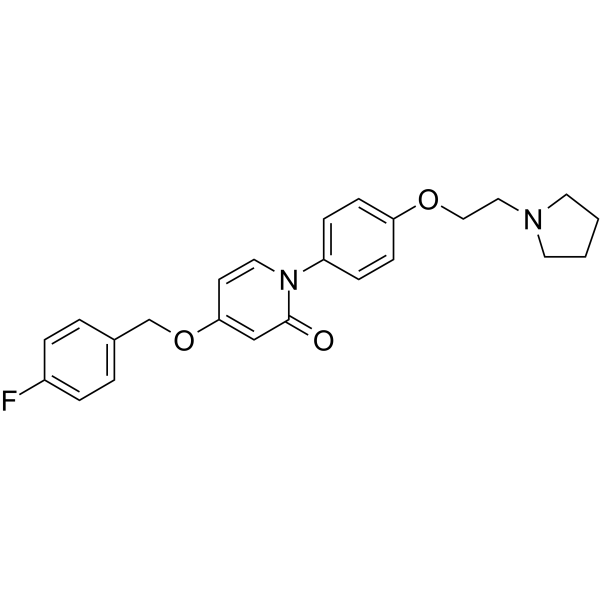
-
- HY-15748
-
|
ADX-71149
|
mGluR
|
Neurological Disease
|
|
JNJ-40411813 (ADX-71149) is a novel positive allosteric modulator of the metabotropic Glutamate 2 receptor (mGlu2R) with EC50 of 147 nM. JNJ-40411813 has orally bioactivity and penetrate the blood-brain barriers. JNJ-40411813 has the potential property of anti-depression .
|
-
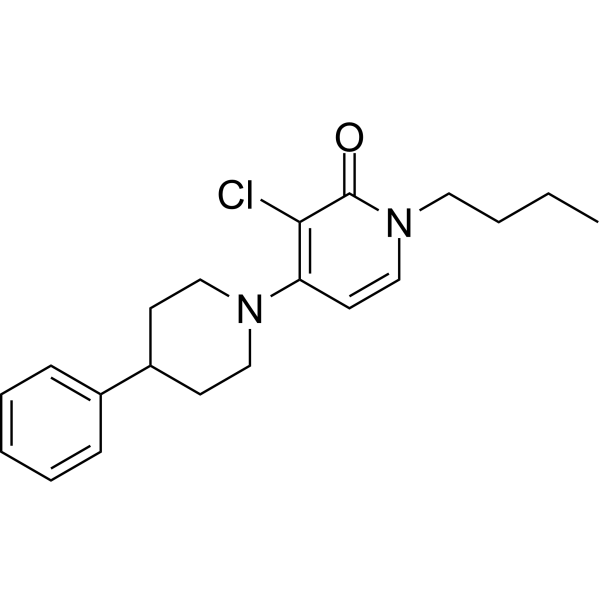
- HY-104044
-
|
BGB-290
|
PARP
|
Cancer
|
|
Pamiparib (BGB-290) is an orally active, potent, highly selective PARP inhibitor, with IC50 values of 0.9 nM and 0.5 nM for PARP1 and PARP2, respectively. Pamiparib has potent PARP trapping, and capability to penetrate the brain, and can be used for the research of various cancers including the solid tumor .
|
-
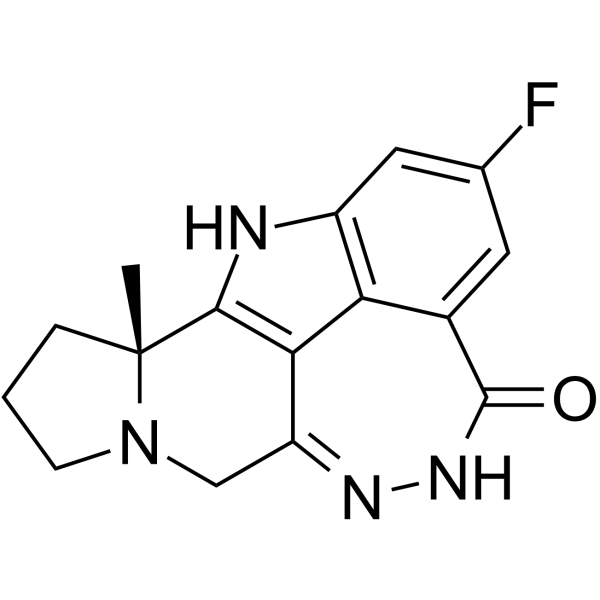
- HY-147684
-
|
|
FGFR
|
Neurological Disease
|
|
FGFR-IN-7 (compound 17) is an orally active, potent and BBB-penetrated FGFR (fibroblast growth factor receptor) modulator. FGFR-IN-7 shows neuroprotective activity. FGFR-IN-7 improves brain exposure and reduced risk of phospholidosis. FGFR-IN-7 can be used for neurodegenerative diseases research .
|
-
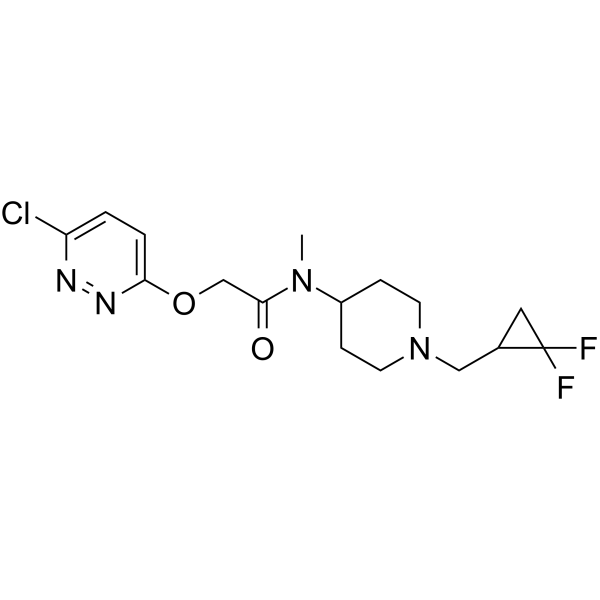
- HY-17412S1
-
|
|
Isotope-Labeled Compounds
|
Infection
Neurological Disease
Inflammation/Immunology
Cancer
|
|
Minocycline-d6 sulfate is deuterated labeled Minocycline (HY-17412A). Minocycline is an orally effective semi-synthetic tetracycline antibiotic and HIF-1α inhibitor that can penetrate the blood-brain barrier. Minocycline has bacteriostatic, anti-cancer, anti-inflammatory, neuroprotective properties and antidepressant effects.
|
-
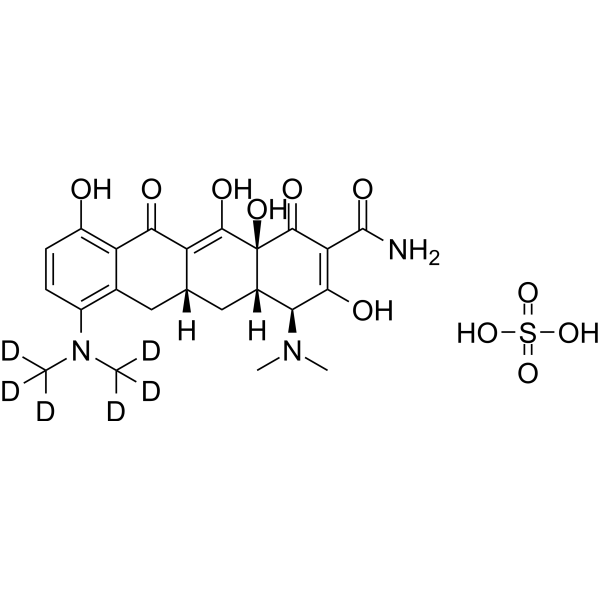
- HY-120789
-
|
|
γ-secretase
|
Neurological Disease
|
|
PF-06648671 is a novel, brain-penetrable, and orally active γ-secretase modulator (GSM). PF-06648671 reduces Aβ42 and Aβ40, with concomitant increases in Aβ37 and Aβ38 in vitro. PF-06648671 is used for the study of Alzheimer’s disease .
|
-
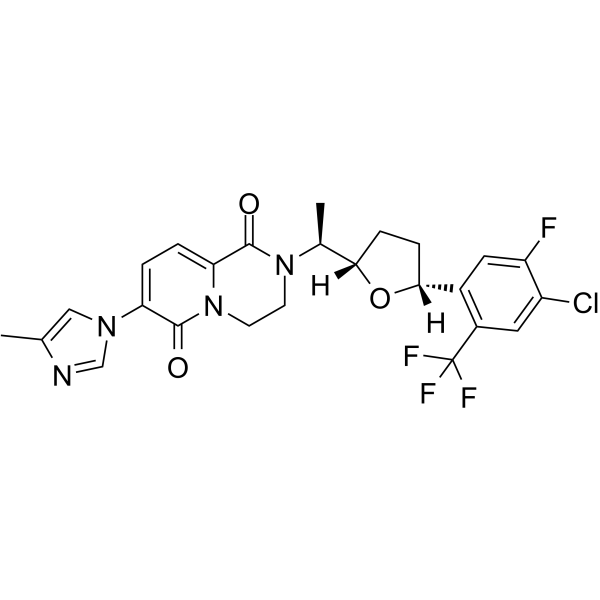
- HY-155058
-
|
|
Sodium Channel
|
Neurological Disease
|
|
Nav1.3 channel inhibitor 1 (compound 15b) is a state-dependent voltage-gated sodium channel Nav1.3 inhibitor (IC50=20 nM). Nav1.3 channel inhibitor 1 can penetrate the blood-brain barrier and can be used in the research of nervous system diseases .
|
-
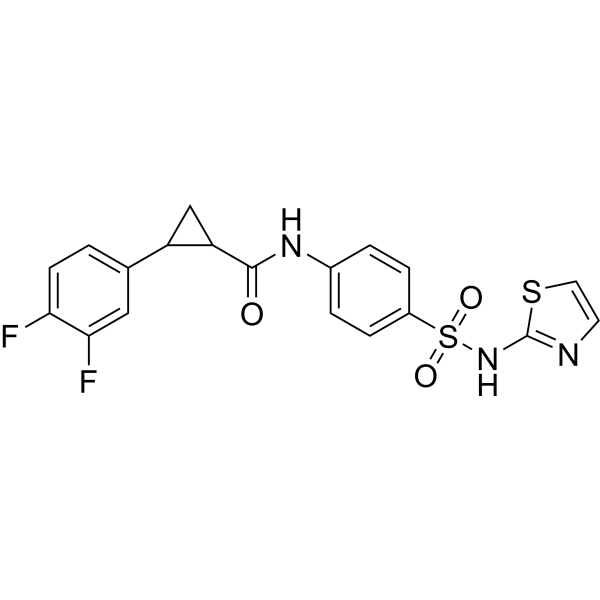
- HY-157400
-
|
|
Monoamine Oxidase
|
Neurological Disease
|
|
hMAO-B-IN-7 (compound 11n) is a potent and blood–brain barrier (BBB) penetrable inhibitor of human monoamine oxidase-B (hMAO-B), with the IC50 value of 0.79±0.05 μM. hMAO-B-IN-7 can be used for Alzheimer’s disease (AD) and Parkinson’s disease (PD) research .
|
-
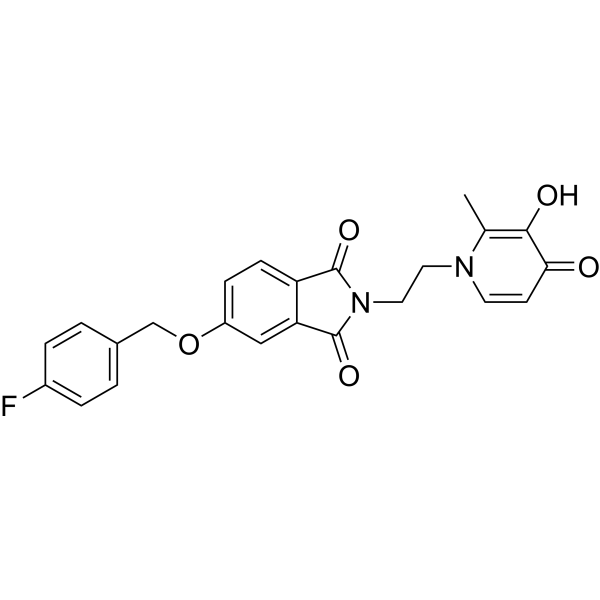
- HY-157978
-
|
|
Cholinesterase (ChE)
Amyloid-β
|
Neurological Disease
|
|
AChE-IN-59 (compounds 3b) is an AChE inhibitor, with an IC50 value of 0.05 μM. AChE-IN-59 can inhibit the aggregation of Aβ1-42, protect nerve cells and penetrate the blood-brain barrier well. AChE-IN-59 can be used for the research of Alzheimer's disease (AD) .
|
-

- HY-124813
-
|
113B7
|
FAK
EGFR
MMP
|
Cancer
|
|
PDZ1i is a potent, BBB-penetrated and specific MDA-9/Syntenin inhibitor. PDZ1i inhibits crucial GBM (glioblastoma multiforme) signaling involving FAK and EGFRvIII. PDZ1i reduces MMP secretion. PDZ1i can improve survival of brain tumor-bearing mice and reduce tumor invasion .
|
-
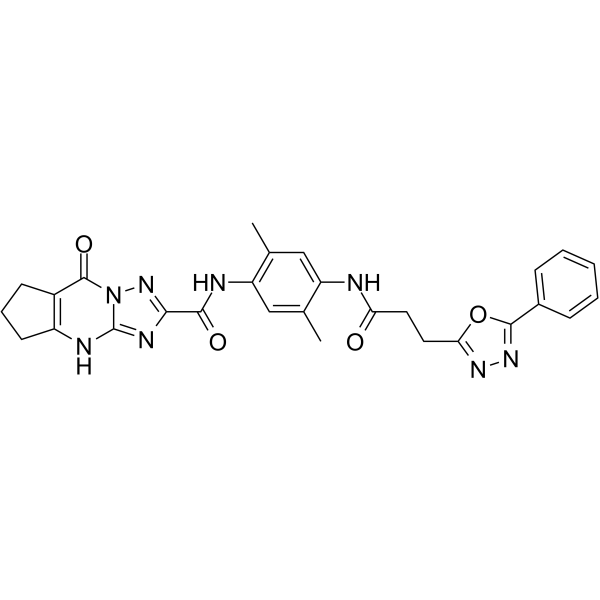
- HY-162127
-
|
|
Cholinesterase (ChE)
Beta-secretase
|
Neurological Disease
|
|
hAChE/hBACE-1-IN-3 (Compound 23a) is a mixed-type inhibitor of hAChE and hBACE-1 with IC50 values of 0.32 μM and 0.39 μM, respectively, Ki values of 0.26 μM and 0.46 μM, respectively. hAChE/hBACE-1-IN-3 can penetrate the blood-brain barrier .
|
-

- HY-10510
-
|
|
Ribosomal S6 Kinase (RSK)
Autophagy
|
Cancer
|
|
BI-D1870 is an ATP-competitive, cell permeable and brain penetrated inhibitor of RSK isoforms, with IC50s of 31 nM/24 nM/18 nM/15 nM for RSK1/RSK2/RSK3/RSK4, respectively .
|
-

- HY-10847A
-
|
SB-277011A dihydrochloride
|
Dopamine Receptor
|
Neurological Disease
|
|
SB-277011 dihydrochloride (SB-277011A dihydrochloride) is a potent, selective, orally bioavailable and brain penetrate dopamine D3 receptor antagonist, with pKis of 8.0, 6.0, <5.2 and 5.9 for D3, D2, 5-HT1B, and 5-HT1D receptors, respectively.
|
-

- HY-109502S
-
|
|
Isotope-Labeled Compounds
|
Neurological Disease
|
|
10-OH-NBP-d4 is deuterium labeled 10-OH-NBP. 10-OH-NBP is a Butylphthalide (3-n-Butylphthalide; NBP; HY-B0647) hydroxylated metabolite and can penetrates the blood-brain barrier (BBB). Butylphthalide exerts neuroprotective effects and has potential for cerebral ischemia research[1].
|
-

- HY-111544
-
|
|
Histone Methyltransferase
|
Cancer
|
|
EML741 is a histone lysine methyltransferase G9a/GLP inhibitor, with an IC50 of 23 nM, Kd of 1.13 μM for G9a. EML741 also inhibits DNMT1 (IC50, 3.1 μM), with no effect on DNMT3a or DNMT3b. EML741 exhibits low cell toxicity, and is membrane permeable and blood-brain barrier penetrated .
|
-
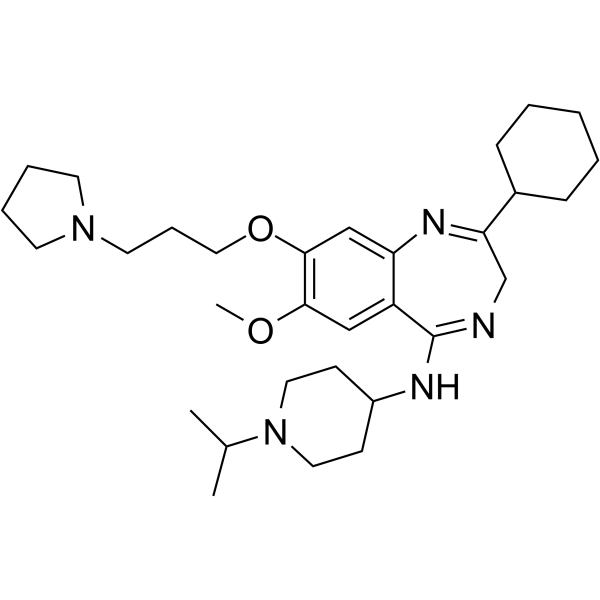
- HY-146315
-
|
|
Cholinesterase (ChE)
Monoamine Oxidase
|
Neurological Disease
|
|
AChE/BChE-IN-6 (compound 22) is a potent dual AChE/BChE inhibitor with IC50 values of 0.809 µM, 2.248 µM and > 100 µM for hBChE, hAChE and hMAO-B, respectively. AChE/BChE-IN-6 penetrates the blood-brain barrier (BBB). AChE/BChE-IN-6 can be used for Alzheimer’s disease (AD) research .
|
-
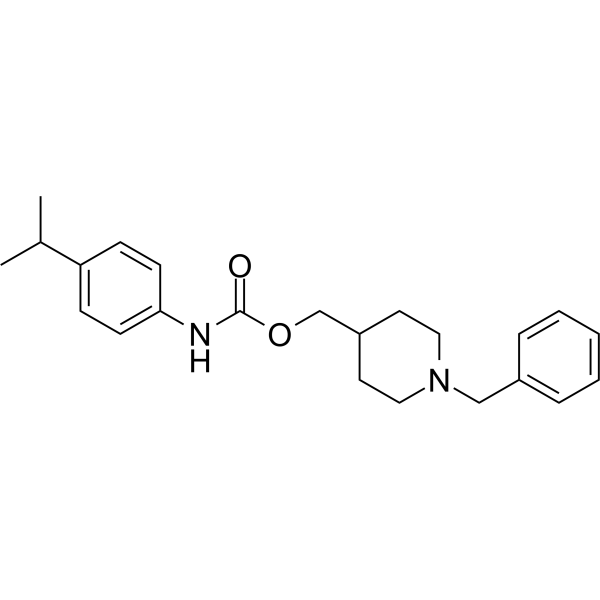
- HY-148236
-
|
|
TRP Channel
|
Inflammation/Immunology
|
|
BAY-390 is a selective, across species active and brain penetrating TRPA1 inhibitor. BAY-390 inhibits hTRPA1 FLIPR, hTRPA1 Ephys, rTRPA1 FLIPR and rDRG Ephys with IC50s of 16, 82, 63 and 35 nM, respectively. BAY-390 can be used for the research of inflammation .
|
-
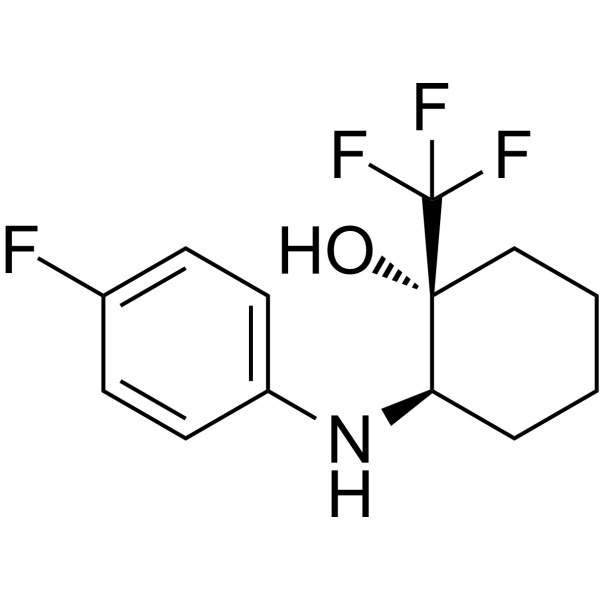
- HY-111540A
-
|
(Rac)-IDO1-IN-5
|
Indoleamine 2,3-Dioxygenase (IDO)
|
Cancer
|
|
(Rac)-LY-3381916 ((Rac)-IDO1-IN-5; Example 1) is a racemate of LY-3381916 . LY-3381916 is a potent, selective and brain penetrated inhibitor of Indoleamine 2,3-Dioxygenase 1 (IDO1) activity, binds to apo-IDO1 lacking heme rather than mature heme-bound IDO1 .
|
-
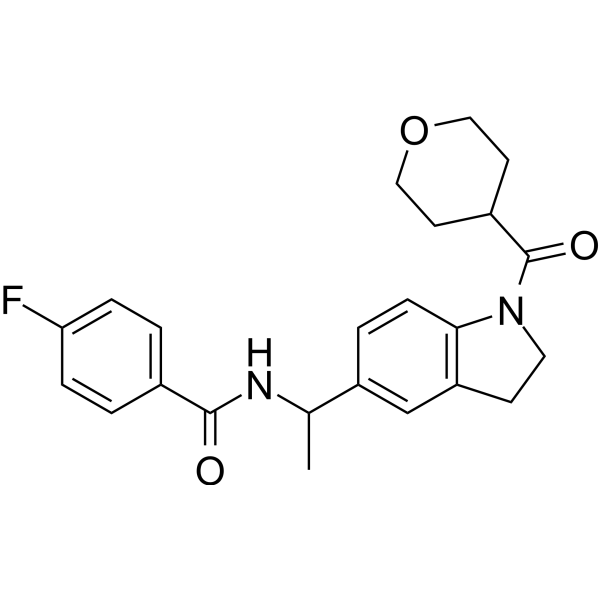
- HY-137262
-
|
|
Others
|
Neurological Disease
|
|
Protein deglycase DJ-1 against-1, a DJ-1-binding compound, dependently targets DJ1. Protein deglycase DJ-1 against-1 penetrates through the blood brain barrier (BBB). Protein deglycase DJ-1 against-1 is used as a neuroprotective agent and has the potential for Parkinson's disease research .
|
-
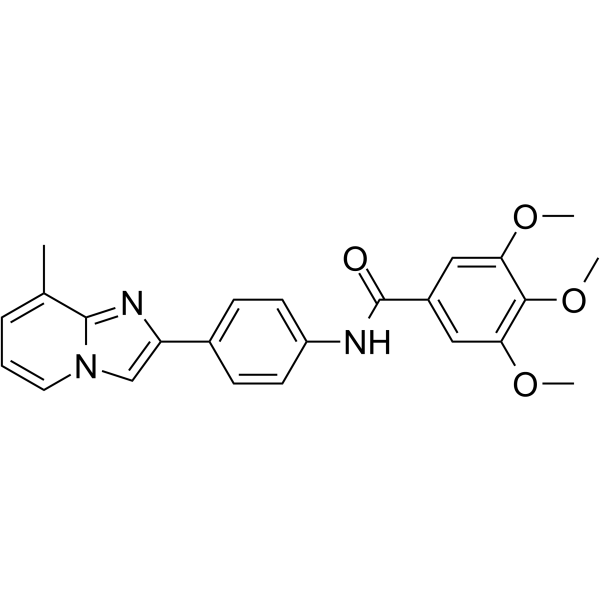
- HY-147873
-
|
|
iGluR
HDAC
|
Neurological Disease
|
|
NMDAR/HDAC-IN-1 (Compound 9d) is a dual NMDAR and HDAC inhibitor with a Ki of 0.59 μM for NMDAR and IC50 values of 2.67, 8.00, 2.21, 0.18 and 0.62 μM for HDAC1, HDAC2, HDAC3, HDAC6 and HDAC8, respectively. NMDAR/HDAC-IN-1 efficiently penetrates the blood brain barrier .
|
-

- HY-149991
-
|
|
HIV
|
Infection
|
|
HIV-1 inhibitor-56 (compound 12126065) is a potent HIV-1 non-nucleoside reverse transcriptase inhibitor. HIV-1 inhibitor-56 has antiviral activity against wild-type HIV-1 in TZM cells with an EC50 value of 0.24 nM. HIV-1 inhibitor-56 penetrates the blood-brain barrier .
|
-

- HY-N0307
-
|
|
Bcl-2 Family
|
Neurological Disease
|
|
Ciwujianoside B is isolated from Eleutherococcus senticosus leaf, is able to penetrate and work in the brain after the oral administration. Ciwujianoside B significantly enhances object recognition memory .
Ciwujianoside B shows radioprotective effects on the hematopoietic system in mice, which is associated with changes in the cell cycle, reduces DNA damage and down-regulates the ratio of Bax/Bcl-2 in bone marrow cells exposed to radiation .
|
-
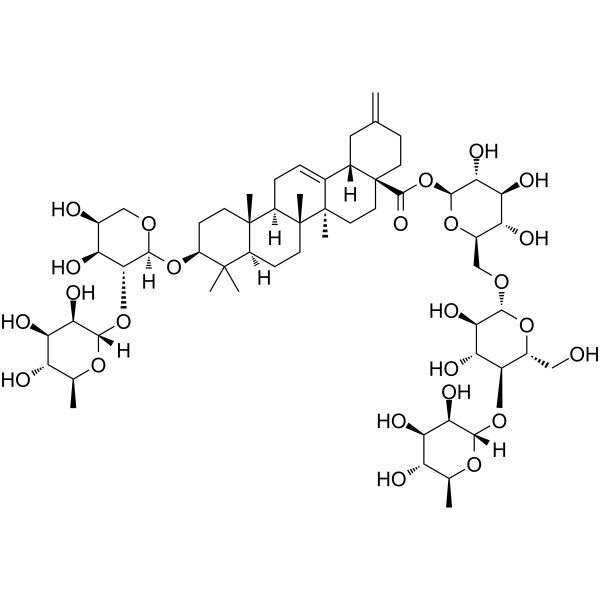
- HY-128463
-
|
|
COX
Reactive Oxygen Species
|
Neurological Disease
Metabolic Disease
Inflammation/Immunology
|
|
N-tert-Butyl-α-phenylnitrone is a nitrone-based free radical scavenger that forms nitroxide spin adducts. N-tert-Butyl-α-phenylnitrone inhibits COX2 catalytic activity. N-tert-Butyl-α-phenylnitrone has potent ROS scavenging, anti-inflammatory, neuroprotective, anti-aging and anti-diabetic activities, and can penetrate the blood-brain barrier .
|
-
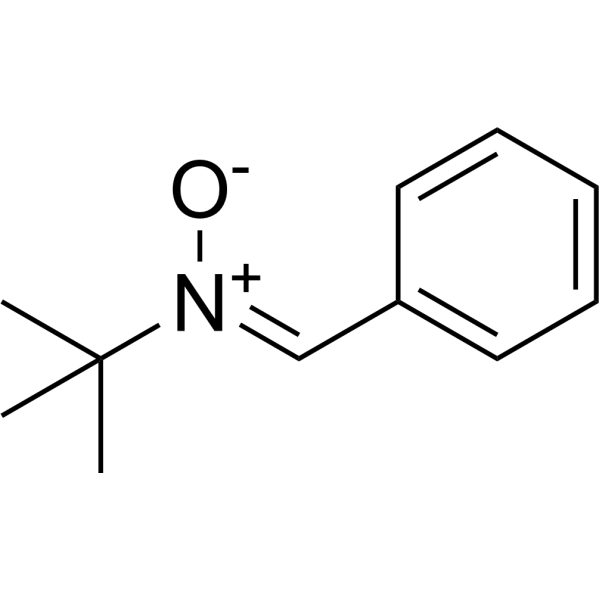
- HY-144632
-
|
|
Fungal
|
Infection
|
|
Antifungal agent 22 (compound D16) is a potential and orally active antifungal agent for CM (cryptococcal meningitis), with an IC50 of 0.5 μg/mL. Antifungal agent 22 can penetrate the blood-brain barrier and kill the C. neoformans H99 cells by destroying the integrity of fungal cell membranes. Antifungal agent 22 shows selective anti-Cryptococcus activity with good metabolic stability and low cytotoxicity .
|
-

- HY-163384
-
|
|
Dopamine Transporter
|
Neurological Disease
|
|
(S)-CE-123 is a potent, selective, and novel atypical dopamine transporter (DAT) inhibitor with an EC50 of 2.76 μM in uptake inhibition assays conducted in HEK293 cells stably expressing human isoforms of DAT. (S)-CE-123, a Modafinil analogue, is able to penetrate the blood–brain barrier. (S)-CE-123 improves cognitive and motivational processes in experimental animals .
|
-
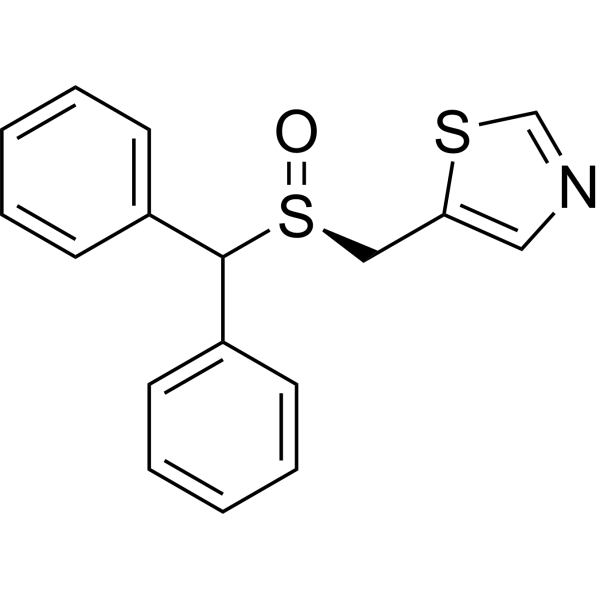
- HY-B1080
-
|
|
HIF/HIF Prolyl-Hydroxylase
Influenza Virus
|
Infection
Neurological Disease
|
|
Tilorone dihydrochloride is an orally active interferon (IFN) inducer with broad-spectrum antiviral activities. Tilorone dihydrochloride possesses robust anti-Severe fever with thrombocytopenia syndrome virus (SFTSV) activity in vitro and in vivo through stimulation of host innate immunity. Tilorone dihydrochloride can penetrate the blood-brain barrier to activate HIF in the CNS .Tilorone dihydrochloride exhibits an inhibitory activity with EC50 of 230 nM against Ebola virus (EBOV) .
|
-
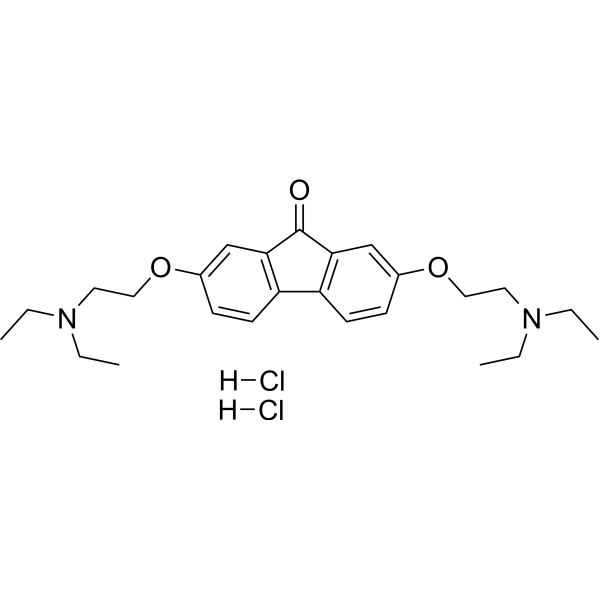
- HY-101478
-
|
|
mGluR
Apoptosis
|
Neurological Disease
Cancer
|
|
Fenobam is a selective and orally active mGluR5 antagonist (IC50=84 nM) that can penetrate the blood-brain barrier. Fenobam shows the Kd values of 54 nM and 31 nM on rat and human recombinant mGlu5 receptors, respectively. Fenobam has anxiolytic activity, inhibits self-administration behavior in mice, and induces apoptosis in cancer cells. Fenobam can be used for research on neurological diseases, cancer and drug addiction .
|
-

- HY-115681
-
|
6-Prenylnaringenin; (±)-6-Prenylnaringenin
|
Calcium Channel
|
Neurological Disease
|
|
(2R/S)-6-PNG (6-Prenylnaringenin) is a potent and reversible Cav3.2 T-type Ca 2+ channels (T-channels) blocker. (2R/S)-6-PNG can penetrate the blood-brain barrier (BBB). (2R/S)-6-PNG suppresses neuropathic and visceral pain in mice .
|
-
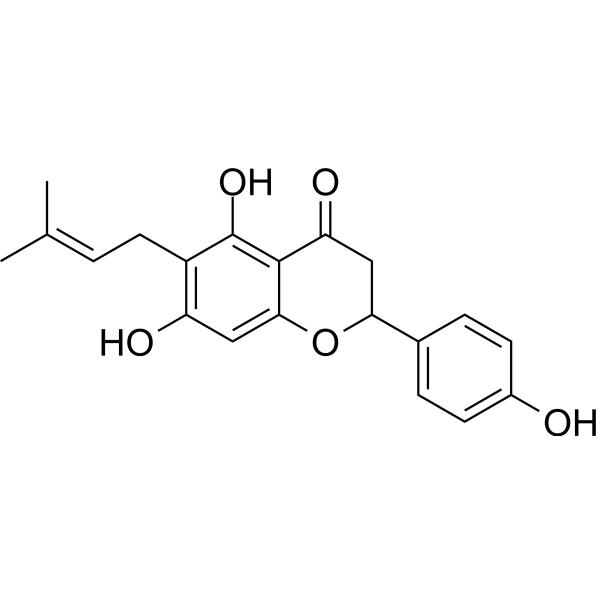
- HY-105066
-
|
|
Microtubule/Tubulin
Amyloid-β
|
Neurological Disease
|
|
Davunetide is an eight amino acid snippet derived from activity-dependent neuroprotective protein (ADNP), a neurotrophic factor that exists in the mammalian CNS. Davunetide possesses neuroprotective, neurotrophic and cognitive protective roperties. Davunetide, a microtubule-stabilizing peptide, interacts with and stabilises neuron-specific βIII-tubulin in vitro. Davunetide penetrates the blood-brain barrier and is non-toxic. Davunetide inhibits Aβ aggregation and Aβ-induced neurotoxicity .
|
-
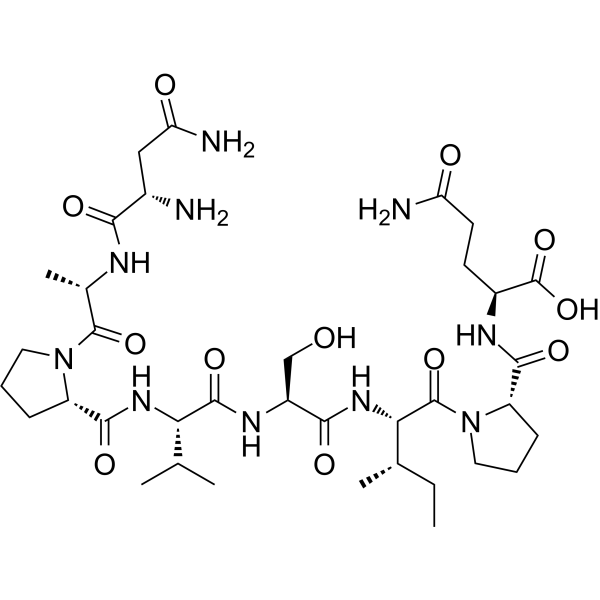
- HY-101478A
-
|
|
mGluR
Apoptosis
|
Neurological Disease
Cancer
|
|
Fenobam hydrate is a selective and orally active mGluR5 antagonist (IC50=84 nM) that can penetrate the blood-brain barrier. Fenobam hydrate shows the Kd values of 54 nM and 31 nM on rat and human recombinant mGlu5 receptors, respectively. Fenobam hydrate has anxiolytic activity, inhibits self-administration behavior in rat, and induces apoptosis in cancer cells. Fenobam hydrate can be used for research on neurological diseases, cancer and drug addiction .
|
-
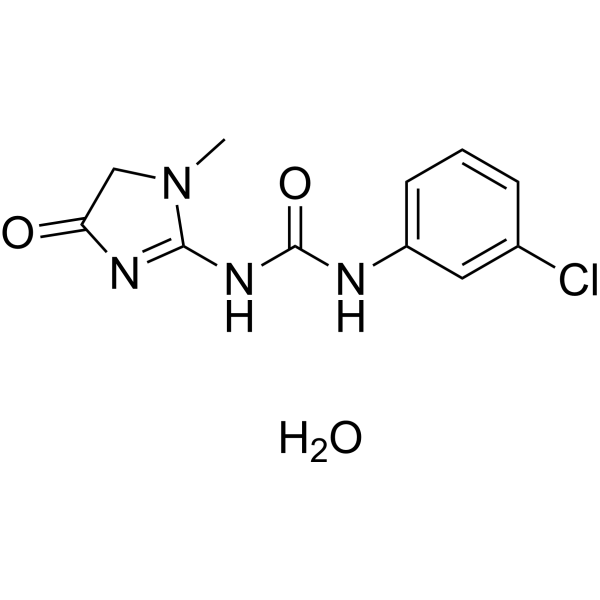
- HY-128656
-
|
|
Histamine Receptor
|
Neurological Disease
Endocrinology
|
|
LML134 (compound 18b) is an orally active and high selective Histamine 3 receptor (H3R) inverse agonist with Kis of 0.3 nM and 12 nM for hH3R cAMP and hH3R bdg. LML134 penetrates the brain rapidly, leading to high H3R occupancy, and disengages its target with a fast kinetic profile. LML134 has the potential for excessive sleep disorders .
|
-
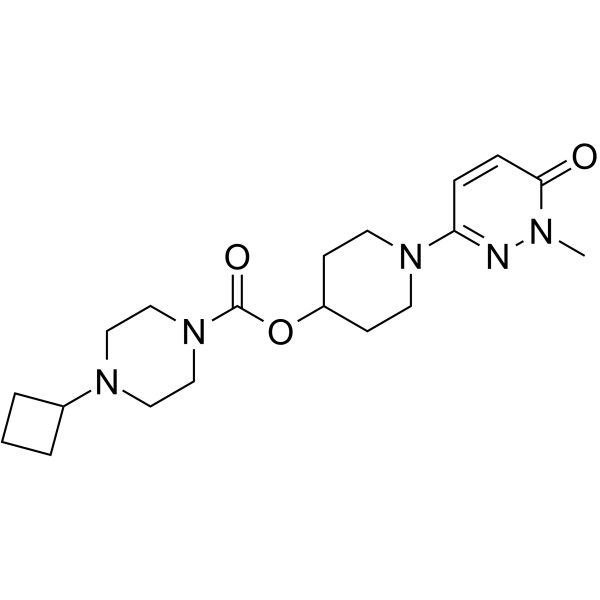
- HY-125469
-
|
PF-04895162
|
Potassium Channel
|
Neurological Disease
|
|
ICA-105665 (PF-04895162) is a potent and orally active neuronal Kv7.2/7.3 and Kv7.3/7.5 potassium channels opener. ICA-105665 inhibits liver mitochondrial function and bile salt export protein (BSEP) transport (IC50 of 311 μM). ICA-105665 can penetrate the blood-brain barrier and has antiseizure effects .
|
-
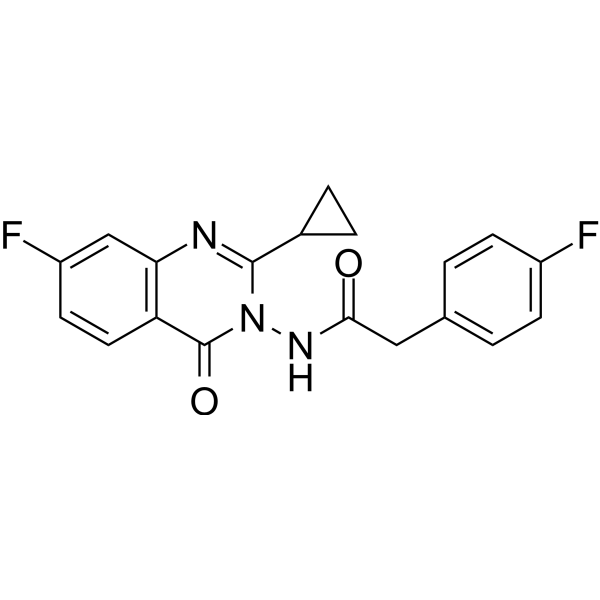
- HY-149556
-
|
|
EGFR
PI3K
|
Cancer
|
|
MTX-241F is a selective small molecule inhibitor targeting EGFR and PI3 kinase family members. MTX-241F is able to penetrate the blood-brain barrier and control tumor growth over the long term. MTX-241F exhibits radiosensitizing activity in patient-derived DIPG neurospheres and may be used in the study of diffuse intrinsic pontine glioma (DIPG) .
|
-
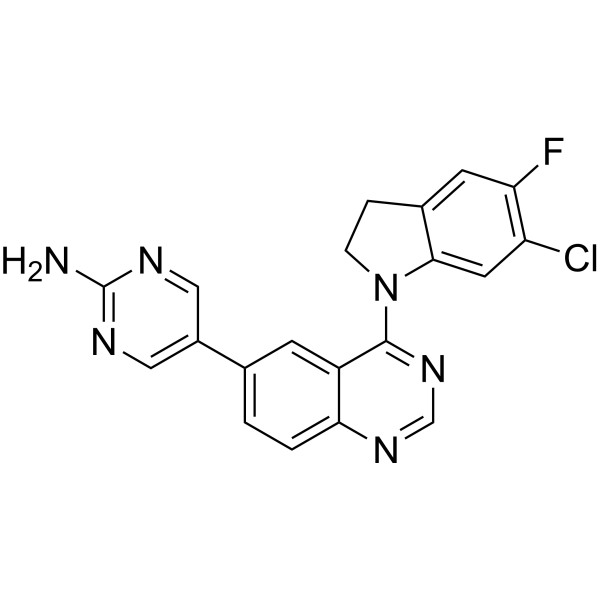
- HY-107732
-
|
|
Neuropeptide Y Receptor
|
Neurological Disease
|
|
JNJ-5207787 is a nonpeptidic, selective and penetrate the blood-brain barrier neuropeptide Y Y2 receptor (Y2) antagonist. JNJ-5207787 inhibits the binding of peptide YY (PYY) with pIC50s of 7.0 and 7.1 for human Y2 receptor and rat Y2 receptor, respectively. JNJ-5207787 is >100-fold selective versus human Y1, Y4, and Y5 receptors .
|
-
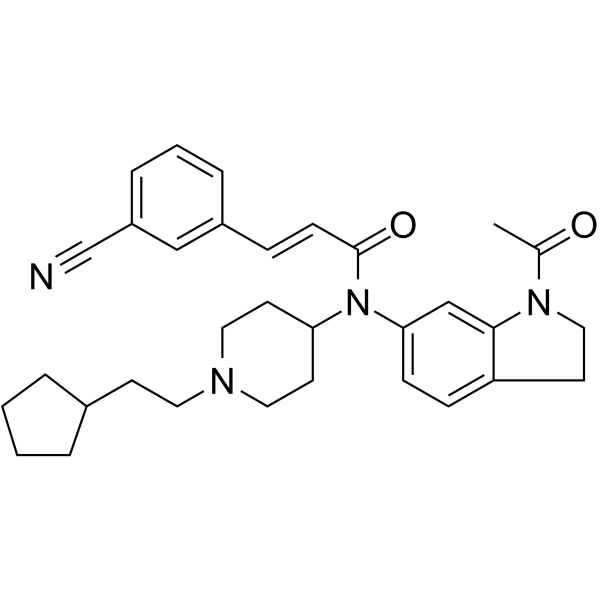
- HY-12697A
-
|
|
Dopamine Receptor
|
Neurological Disease
|
|
NGB 2904 hydrochloride is a potent, selective, orally active and brain-penetrated antagonist of dopamine D3 receptor, with a Ki of 1.4 nM. NGB 2904 hydrochloride shows selectivity for D3 over D2, 5-HT2, α1, D4, D1 and D5 receptors (Kis=217, 223, 642, >5000, >10000 and >10000 nM, respectively). NGB 2904 hydrochloride antagonizes Quinpirole-stimulated mitogenesis .
|
-
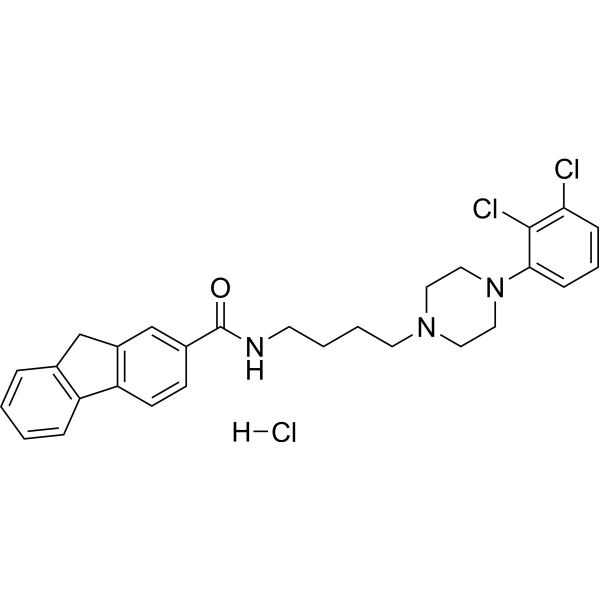
- HY-12697
-
|
|
Dopamine Receptor
|
Neurological Disease
|
|
NGB 2904 is a potent, selective, orally active and brain-penetrated antagonist of dopamine D3 receptor, with a Ki of 1.4 nM. NGB 2904 shows selectivity for D3 over D2, 5-HT2, α1, D4, D1 and D5 receptors (Kis=217, 223, 642, >5000, >10000 and >10000 nM, respectively). NGB 2904 antagonizes Quinpirole-stimulated mitogenesis .
|
-
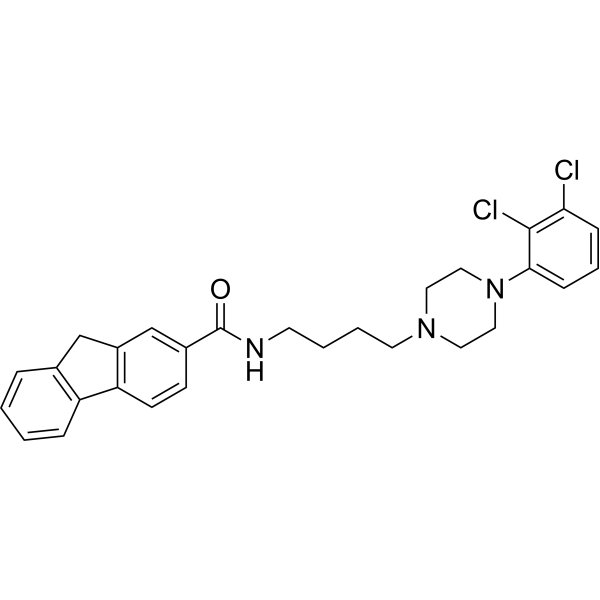
- HY-147056
-
|
PKRA7
|
Others
|
Inflammation/Immunology
Cancer
|
|
PKRA83 (PKRA7) is a potent prokineticin (PK2) antagonist, which can compete for the binding of PK2 to its receptors PKR1 and PKR2. PKRA83 potently inhibits PK2 receptors, with IC50 values of 5.0 nM and 8.2 nM for PKR1 and PKR2, respectively. PKRA83 has anticancer, anti-arthritis and anti-angiogenic activities. PKRA83 can penetrate the blood-brain barrier .
|
-

- HY-152671
-
|
|
Monoamine Oxidase
|
Neurological Disease
|
|
hMAO-B-IN-4 (compound B10) is a selective, reversible and blood–brain barrier (BBB) penetrable human monoamine oxidase-B (hMAO-B) inhibitor with an IC50 value and a Ki value of 0.067 and 0.03 μM, respectively. hMAO-B-IN-4 inhibits hMAO-A with an IC50 value of 33.82 μM. hMAO-B-IN-4 can be used for Alzheimer’s disease (AD) and Parkinson’s disease (PD) research .
|
-
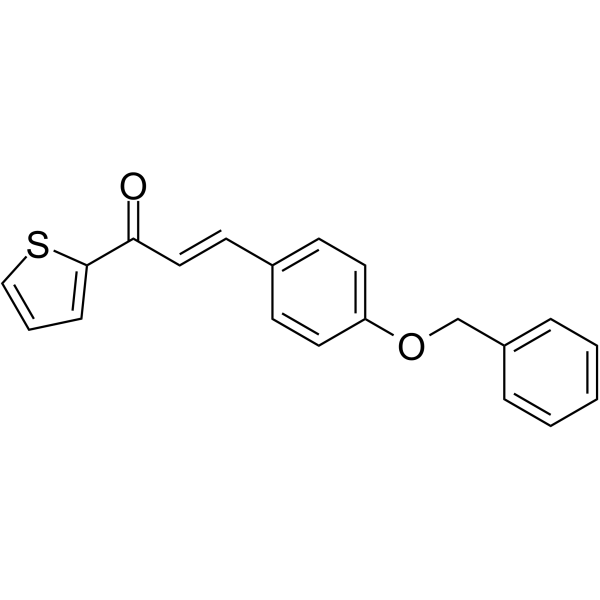
- HY-107691
-
|
|
Neurokinin Receptor
|
Neurological Disease
Endocrinology
Cancer
|
|
GR 159897 is a highly potent, selective, competitive, brain-penetrated non-peptide neurokinin 2 (NK2) receptor antagonist. GR 159897 has little or no affinity for NK1 and NK3 receptors. GR 159897 inhibits binding of [ 3H]GR100679 to human NK2 (hNK2)-CHO cells and rat colon membranes with pKis of 9.51 and 10, respectively. Antagonizes bronchoconstriction. Anxiolytic-like and anti-tumor effects .
|
-

- HY-121618
-
|
|
GABA Receptor
Reactive Oxygen Species
Parasite
Apoptosis
Autophagy
|
Infection
Neurological Disease
Cancer
|
|
α-Thujone is a monoterpene isolated from Thuja occidentalis essential oil with potent anti-tumor activities. α-Thujone is a reversible modulator of the GABA type A receptor and the IC50 for α-Thujone is 21 μM in suppressing the GABA-induced currents. α-Thujone induces ROS accumulation-dependent cytotoxicity, also induces cell apoptosis and autophagy. α-Thujone has antinociceptive, insecticidal, and anthelmintic activity, and easily penetrates the blood-brain barrier .
|
-
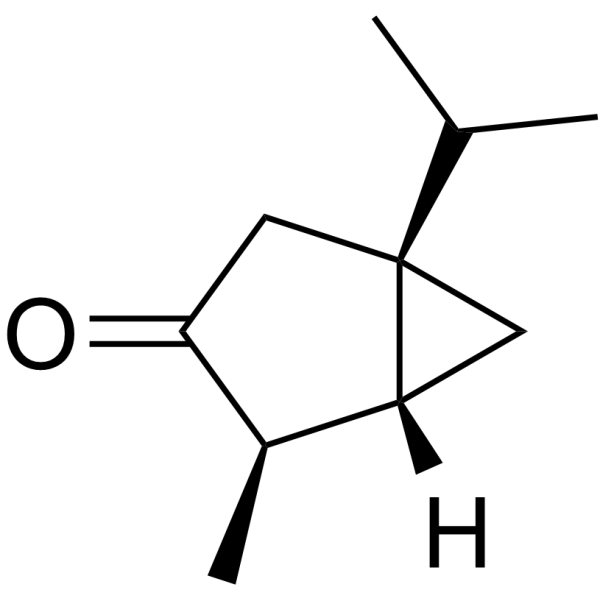
- HY-144765
-
|
|
NF-κB
Apoptosis
|
Neurological Disease
Inflammation/Immunology
|
|
NF-κB-IN-4 (compound 17) is a potent and BBB-penetrated NF-κB pathway inhibitor with blood brain barrier (BBB) permeability. NF-κB-IN-4 exhibits potential anti-neuroinflammatory activity with low toxicity. NF-κB-IN-4 can block the activation and phosphorylation of IκBα, reduce expression of NLRP3, and thus inhibit NF-κB activation. NF-κB-IN-4 can be used for neuroinflammation related diseases research .
|
-

- HY-156102
-
|
|
Bcr-Abl
|
Neurological Disease
|
|
c-ABL-IN-5 is a selective c-Abl inhibitor with neuroprotective effects. c-ABL-IN-5 has blood-brain barrier penetrability, metabolic stability and good pharmacokinetic properties. When c-ABL-IN-5 is labeled with [18F] (compound [18F]3), it can be used as a tracer to evaluate disease-modifying efficacy by complementary positron emission tomography (PET). c-ABL-IN-5 can be used in the study of neurodegenerative diseases such as Parkinson's disease (PD) .
|
-
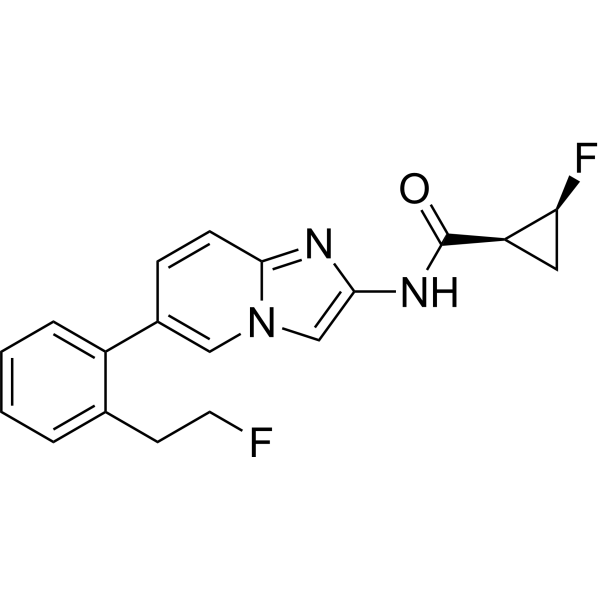
- HY-149695
-
|
|
EGFR
|
Cancer
|
|
EGFR-IN-91 (compound 9) is an orally available EGFR inhibitor with blood-brain barrier penetrability. EGFR-IN-91 inhibits EGFR L858R/C797S and EGFR exon 19del/C797S, inducing tumor regression in xenograft (PDX) mouse models. EGFR-IN-91 has the potential to inhibit localized and metastatic non-small cell lung cancer (NSCLC) driven by EGFR mutants .
|
-

- HY-15113A
-
|
|
Prolyl Endopeptidase (PREP)
|
Neurological Disease
Cancer
|
|
Y-29794 tosylate is a selective, orally active inhibitor for non-peptide prolyl endopeptidase (PPCE), with an IC50 of 3 nM and a Ki of 0.95 nM. Y-29794 tosylate enhances the effect of thyrotropin-releasing hormone (TRH) on the release of ACh in the rat hippocampus, exhibits potential neuroprotective efficacy. Y-29794 tosylate exhibits anticancer activity through inhibition of the IRS1-AKT-mTORC1 pathway. Y-29794 tosylate penetrates the brain-blood barrier (BBB) .
|
-
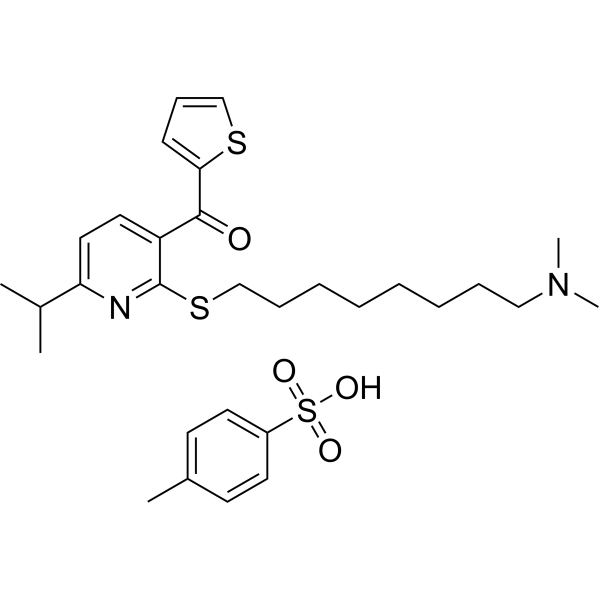
- HY-13488
-
|
|
LRRK2
MNK
|
Neurological Disease
|
|
HG-10-102-01 is a highly potent, selective, and brain-penetrable LRRK2 inhibitor, with IC50 values of 20.3 and 3.2 nM against wild-type LRRK2 and LRRK2[G2019S], respectively. HG-10-102-01 also inhibits MNK2 and MLK1, with IC50 values of 0.6 and 2.1 μM. HG-10-102-01 can be used for Parkinson's disease (PD) research .
|
-
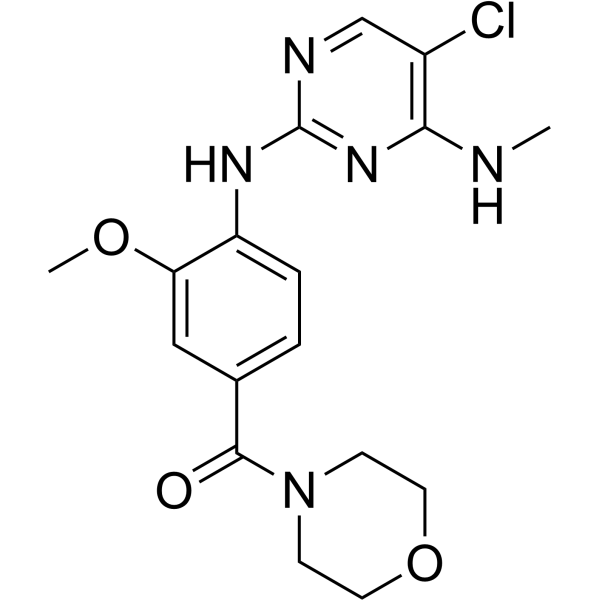
- HY-103309
-
|
|
Calcium Channel
|
Neurological Disease
|
|
ML218 is a potent, selective and orally active T-type Ca 2+ channels (Cav3.1, Cav3.2, Cav3.3) inhibitor with IC50s of 310 nM and 270 nM for Cav3.2 and Cav3.3, respectively. ML218 inhibits the burst activity in subthalamic nucleus (STN) neurons. ML218 has no significant inhibition of L- or N-type calcium channels, KATP or hERG potassium channels. ML218 can penetrate the blood-brain barrier .
|
-

- HY-116941
-
|
|
Dopamine Receptor
|
Neurological Disease
|
|
A-381393 is a potent, selective, brain penetrate dopamine D4 receptor antagonist, with Kis of 1.5, 1.9 and 1.6 nM for human dopamine D4.4, D4.2, and D4.7 receptor, respectively, >2700-fold selectivity over D1, D2, D3 and D5 dopamine receptors. A-381393 shows moderate affinity for 5-HT2A (Ki, 370 nM) .
|
-

- HY-111540B
-
|
(S)-IDO1-IN-5
|
Indoleamine 2,3-Dioxygenase (IDO)
|
Cancer
|
|
(S)-LY-3381916 ((S)-IDO1-IN-5; Example 1B) is an active S-isomer of LY-3381916. (S)-LY-3381916 binds to IDOL with an IC50 value less than 1.5 µΜ . LY-3381916 is a potent, selective and brain penetrated inhibitor of Indoleamine 2,3-Dioxygenase 1 (IDO1) activity, binds to apo-IDO1 lacking heme rather than mature heme-bound IDO1 .
|
-
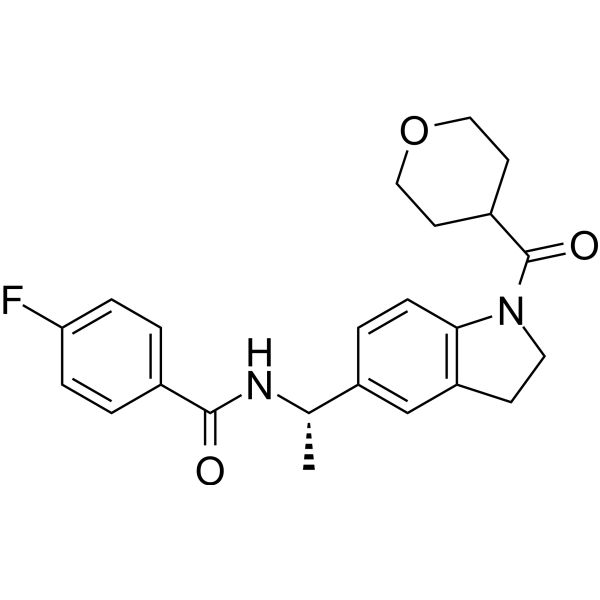
- HY-103309A
-
|
|
Calcium Channel
|
Neurological Disease
|
|
ML218 hydrochloride is a potent, selective and orally active T-type Ca 2+ channels (Cav3.1, Cav3.2, Cav3.3) inhibitor with IC50s of 310 nM and 270 nM for Cav3.2 and Cav3.3, respectively. ML218 hydrochloride inhibits the burst activity in subthalamic nucleus (STN) neurons. ML218 hydrochloride has no significant inhibition of L- or N-type calcium channels, KATP or hERG potassium channels. ML218 hydrochloride can penetrate the blood-brain barrier .
|
-

- HY-123976
-
|
|
HDAC
|
Neurological Disease
Cancer
|
|
MPT0G211 is a potent, orally active and selective HDAC6 inhibitor (IC50=0.291 nM). MPT0G211 displays >1000-fold selective for HDAC6 over other HDAC isoforms. MPT0G211 can penetrate the blood-brain barrier. MPT0G211 ameliorates tau phosphorylation and cognitive deficits in an Alzheimer’s disease model. MPT0G211 has anti-metastatic and neuroprotective effects. Anticancer activities .
|
-
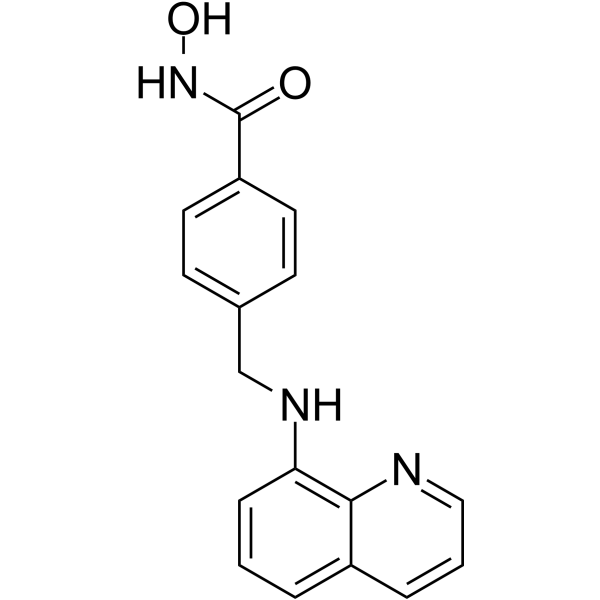
- HY-123976A
-
|
|
HDAC
|
Neurological Disease
Cancer
|
|
MPT0G211 mesylate is a potent, orally active and selective HDAC6 inhibitor (IC50=0.291 nM). MPT0G211 mesylate displays >1000-fold selective for HDAC6 over other HDAC isoforms. MPT0G211 mesylate can penetrate the blood-brain barrier. MPT0G211 mesylate ameliorates tau phosphorylation and cognitive deficits in an Alzheimer’s disease model. MPT0G211 mesylate has anti-metastatic and neuroprotective effects. Anticancer activities .
|
-
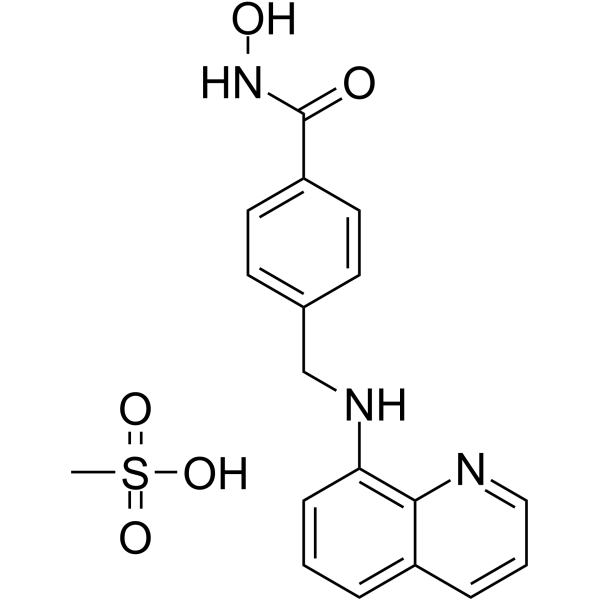
- HY-128463S
-
|
|
COX
Reactive Oxygen Species
|
|
|
N-tert-Butyl-α-phenylnitrone-d14 is the deuterium labeled N-tert-Butyl-α-phenylnitrone[1]. N-tert-Butyl-α-phenylnitrone is a nitrone-based free radical scavenger that forms nitroxide spin adducts. N-tert-Butyl-α-phenylnitrone inhibits COX2 catalytic activity. N-tert-Butyl-α-phenylnitrone has potent ROS scavenging, anti-inflammatory, neuroprotective, anti-aging and anti-diabetic activities, and can penetrate the blood-brain barrier[2][3][4][5].
|
-
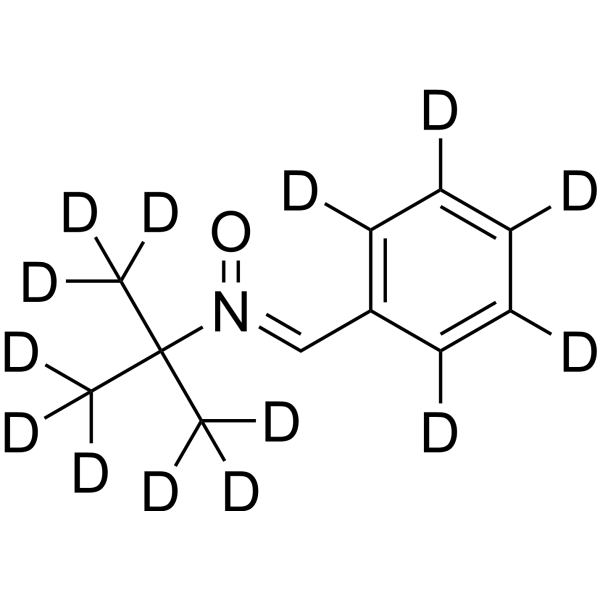
- HY-136208
-
|
|
Opioid Receptor
|
Neurological Disease
|
|
TAN-452 is an orally active, selective peripherally acting δ-opioid receptor (DOR) antagonist with a Ki of 0.47 nM and a Kb of 0.21 nM. TAN-452 is an antagonist for μ-opioid receptor (MOR; Ki=36.56 nM and Kb=9.43 nM) and κ-opioid receptor (KOR; Ki=5.31 nM and Kb=7.18 nM). TAN-452, a derivative of Naltrindole, demonstrates low brain penetrability and attenuates morphine-induced side effects without affecting pain control .
|
-
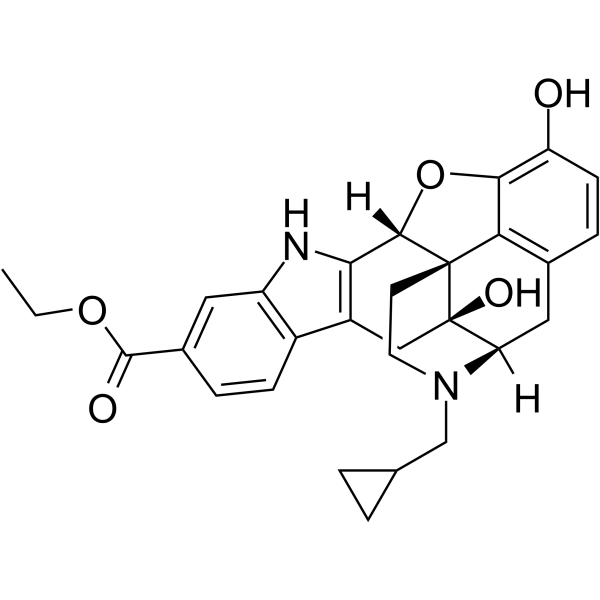
- HY-108039
-
|
HE 3286; NE-3107
|
NF-κB
|
Neurological Disease
Metabolic Disease
Inflammation/Immunology
|
|
Bezisterim (HE 3286; NE-3107) is a synthetic derivative of a natural anti-inflammatory steroid, β-AET. Bezisterim is an orally active partial NF-κB inhibitor. HE3286 reduces proinflammatory signals, including IL-6 and matrix metallopeptidase 3. Bezisterim freely penetrates the blood brain barrier in mice. Bezisterim can be used for the research of the ulcerative colitis, arthritis, experimental autoimmune encephalomyelitis . Bezisterim is a click chemistry reagent, it contains an Alkyne group and can undergo copper-catalyzed azide-alkyne cycloaddition (CuAAc) with molecules containing Azide groups.
|
-
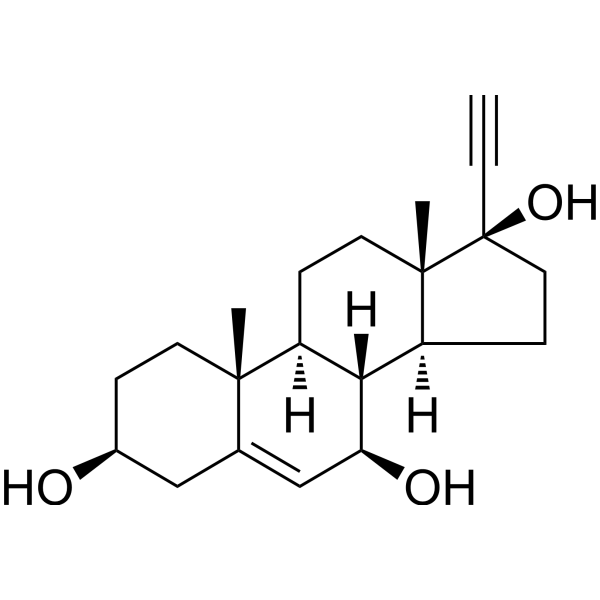
- HY-124322
-
|
|
Beta-secretase
|
Neurological Disease
Inflammation/Immunology
|
|
NB-360 is a potent, brain penetrable, and orally bioavailable dual BACE1/BACE2 inhibitor (IC50: mouse and human BACE1=5 nM; BACE2=6 nM). NB-360 shows a superior pharmacological profile and robust reduction of amyloid-β and neuroinflammation in amyloid precursor protein(APP) transgenic mice. NB-360 can completely block the progression of Aβ deposition in the brains of APP transgenic mice. NB-360 shows excellent selectivity over the related aspartyl proteases pepsin, cathepsin D and cathepsin E .
|
-
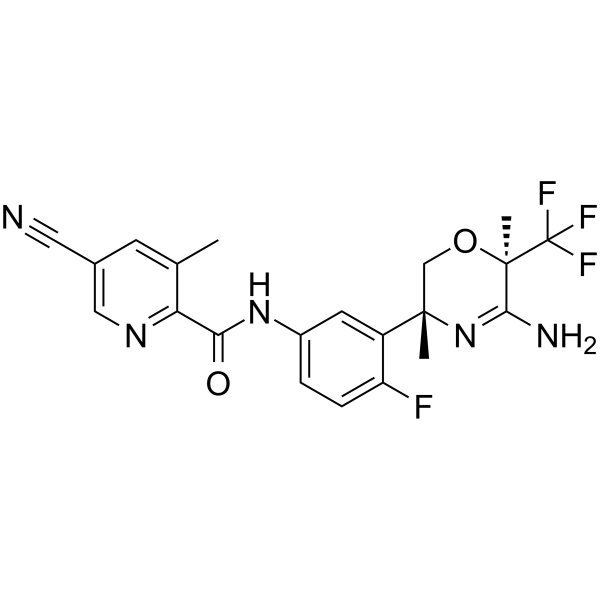
- HY-103309S
-
|
|
Calcium Channel
|
Neurological Disease
|
|
ML218-d9 is the deuterium labeled ML218. ML218 is a potent, selective and orally active T-type Ca2+ channels (Cav3.1, Cav3.2, Cav3.3) inhibitor with IC50s of 310 nM and 270 nM for Cav3.2 and Cav3.3, respectively. ML218 inhibits the burst activity in subthalamic nucleus (STN) neurons. ML218 has no significant inhibition of L- or N-type calcium channels, KATP or hERG potassium channels. ML218 can penetrate the blood-brain barrier[1].
|
-
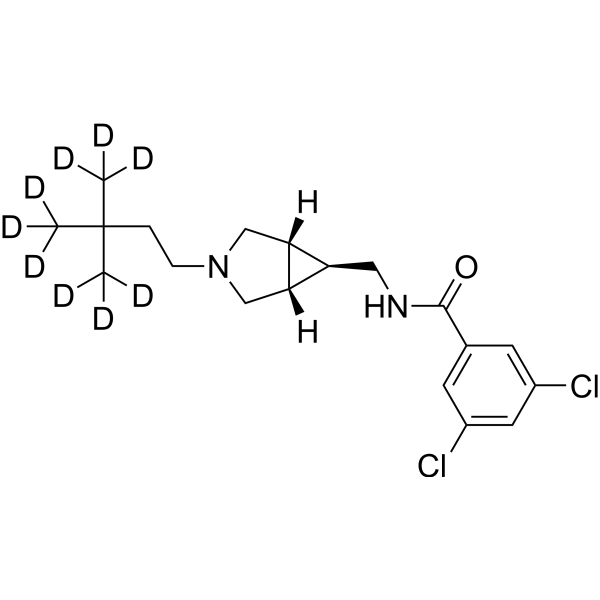
- HY-P3492
-
|
|
SARS-CoV
|
Infection
|
|
SARS-CoV-2-IN-34 (S-20-1) is a blood brain barrier penetrable pan-coronavirus (CoV) fusion inhibitor with broad-spectrum inhibitory activity. SARS-CoV-2-IN-34 effectively inhibits infection by pseudotyped and authentic SARS-CoV-2, and pseudotyped variants of concern (VOCs). SARS-CoV-2-IN-34 shows high affinity to RBD in S1 and HR1 domain in S2 of SARS-CoV-2 S protein. SARS-CoV-2-IN-34 can be used for the research of infection .
|
-
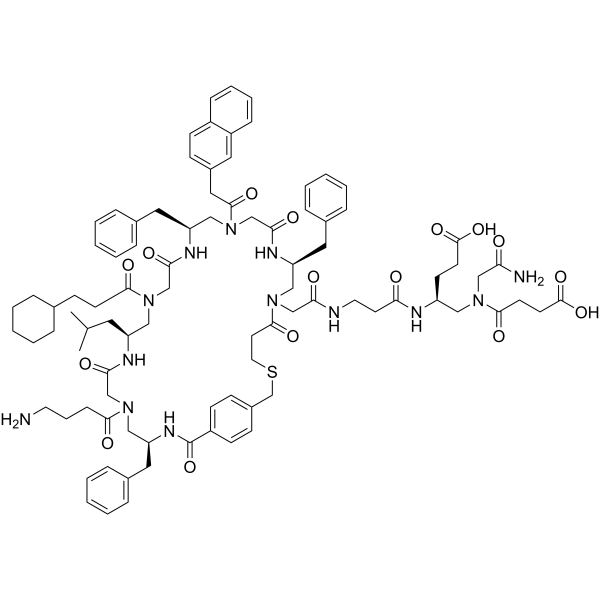
- HY-10847B
-
|
SB-277011A hydrochloride
|
Dopamine Receptor
5-HT Receptor
|
Neurological Disease
|
|
SB-277011 hydrochloride (SB-277011A hydrochloride) is a potent, selective, orally bioavailable and brain penetrate dopamine D3 receptor (D3R) antagonist with Ki values of 10.7 nM and 11.2 nM at rodent and human D3R, respectively. SB-277011 hydrochloride displays 80- to 100-fold selectivity over other dopamine receptors with pKis of 8.0, 6.0, <5.2, and 5.9 for D3, D2, 5-HT1B, and 5-HT1D receptors, respectively .
|
-
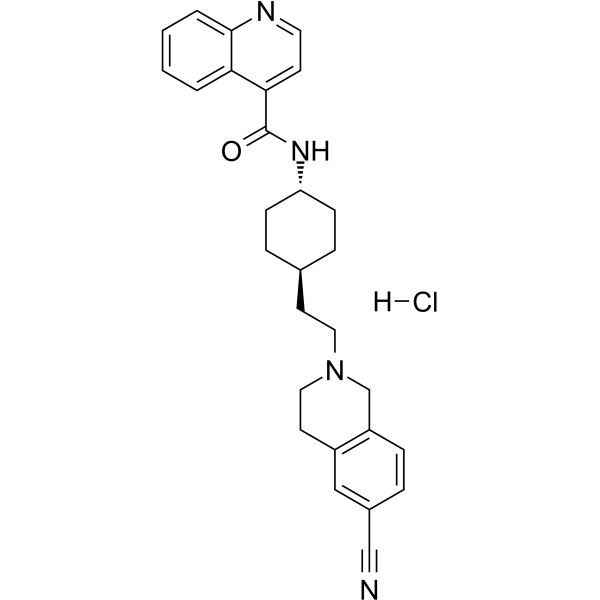
- HY-155811
-
|
|
Others
|
Neurological Disease
|
|
DQP-997-74 (compound 2i) is a selective inhibitor of N-methyl-d-aspartate receptor (NMDAR), specifically targeting GluN2C/D (IC50: 0.069 μM and 0.035 μM), with blood-brain barrier penetrability. Where DQP refers to dihydroquinoline-pyrazoline. DQP-997-74 acts synergistically with the agonist glutamate to exhibit time-dependent enhanced potency in inhibiting hypersynchronous activity driven by high-frequency excitatory synaptic transmission. DQP-997-74 reduces the number of epileptogenesis in a murine model of tuberous sclerosis complex (TSC)-induced epilepsy. DQP-997-74 can be used for research on NMDAR-related neurological diseases .
|
-

- HY-151260
-
|
|
Beta-secretase
Cholinesterase (ChE)
GSK-3
|
Neurological Disease
|
|
AChE/BACE1/GSK3β-IN-1 is an orally active triple inhibitor of AChE/BACE1/GSK3β. AChE/BACE1/GSK3β-IN-1 has effective inhibitory activity against AChE, BACE1 and GSK3β with IC50 values of 1.0 μM, 20 μM and 15 μM, respectively. AChE/BACE1/GSK3β-IN-1 has good blood-brain barrier penetrability, suitable bioavailability. AChE/BACE1/GSK3β-IN-1 can be used for the research of Alzheimer's disease (AD) .
|
-
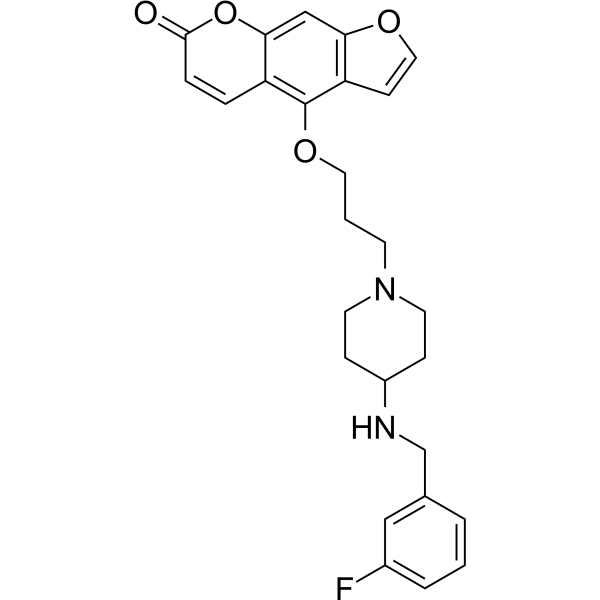
- HY-150537
-
|
|
Cholinesterase (ChE)
GSK-3
Microtubule/Tubulin
ROS Kinase
|
Neurological Disease
|
|
AChE/GSK-3β-IN-1 (compound GT15) is a potent, dual AChE/GSK-3β inhibitor with IC50 values of 1.2, 149.8 and 22.4 nM for hAChE , hBChE and hGSK-3β, respectively. AChE/GSK-3β-IN-1 penetrates the blood-brain barrier (BBB). AChE/GSK-3β-IN-1 has high kinase selectivity profiles for the CMGC kinase family. AChE/GSK-3β-IN-1 occupies the ATP binding site of DYRK1A. AChE/GSK-3β-IN-1 inhibits ROS expression and reduces oxidative stress. AChE/GSK-3β-IN-1 can be used for Alzheimer’s disease research .
|
-

| Cat. No. |
Product Name |
Type |
-
- HY-D0873
-
|
EPPS
|
Biochemical Assay Reagents
|
|
HEPPS (EPPS) is a buffering agent with the useful pH range from 7.3 ~ 8.7. HEPPS reduces Aβ-aggregate-induced memory deficits and rescues cognitive deficits in mice. EPPS is orally active and penetrates the blood-brain barrier .
|
| Cat. No. |
Product Name |
Target |
Research Area |
-
- HY-P4073
-
|
GRN1005; Paclitaxel trevatide
|
Antibody-Drug Conjugates (ADCs)
|
Cancer
|
|
ANG1005 (Paclitaxel trevatide) is a brain-penetrating peptide-drug conjugate. ANG1005, a taxane derivative, consists of three paclitaxel (HY-B0015) molecules covalently linked to Angiopep-2, designed to cross the blood-brain and blood-cerebrospinal barriers and to penetrate malignant cells via low density lipoprotein receptor-related protein (LRP1) transport system .
|
-
- HY-105066
-
|
|
Microtubule/Tubulin
Amyloid-β
|
Neurological Disease
|
|
Davunetide is an eight amino acid snippet derived from activity-dependent neuroprotective protein (ADNP), a neurotrophic factor that exists in the mammalian CNS. Davunetide possesses neuroprotective, neurotrophic and cognitive protective roperties. Davunetide, a microtubule-stabilizing peptide, interacts with and stabilises neuron-specific βIII-tubulin in vitro. Davunetide penetrates the blood-brain barrier and is non-toxic. Davunetide inhibits Aβ aggregation and Aβ-induced neurotoxicity .
|
-
- HY-P4708
-
|
|
Peptides
|
Neurological Disease
|
|
Excitin 1 is an orally active and CNS-penetrated peptide, alters behavior and brain monoamine and amino acid concentrations in rats .
|
-
- HY-P10216
-
|
|
Peptides
|
Others
|
|
CAQK peptide selectively binds to injured mouse brain. CAQK peptide selectively targets demyelinating areas and it is absent from healthy tissue. The CAQK peptide target is a proteoglycan complex upregulated in brain injuries and is used for drug delivery. CAQK peptide can penetrate the blood-brain barrier .
|
-
- HY-P5918
-
|
NAX-5055
|
Peptides
|
Neurological Disease
|
|
Galanin-B2 (NAX-5055) has activity in the epilepsy model. Galanin-B2 can penetrate the blood-brain-barrier .
|
-
- HY-P3492
-
|
|
SARS-CoV
|
Infection
|
|
SARS-CoV-2-IN-34 (S-20-1) is a blood brain barrier penetrable pan-coronavirus (CoV) fusion inhibitor with broad-spectrum inhibitory activity. SARS-CoV-2-IN-34 effectively inhibits infection by pseudotyped and authentic SARS-CoV-2, and pseudotyped variants of concern (VOCs). SARS-CoV-2-IN-34 shows high affinity to RBD in S1 and HR1 domain in S2 of SARS-CoV-2 S protein. SARS-CoV-2-IN-34 can be used for the research of infection .
|
| Cat. No. |
Product Name |
Target |
Research Area |
-
- HY-P99694
-
|
JR-171
|
Inhibitory Antibodies
|
Neurological Disease
|
|
Lepunafusp alfa (JR-171) is a BBB-penetrable fusion protein consisting of J-Brain Cargo and IDUA (a lysosomal enzyme, α-L-iduronidase). Lepunafusp alfa can reduce concentration of heparan sulfate (HS) and dermatan sulfate (DS). Lepunafusp alfa can be used for research of mucopolysaccharidosis type I .
|
| Cat. No. |
Product Name |
Category |
Target |
Chemical Structure |
| Cat. No. |
Product Name |
Chemical Structure |
-
- HY-17412S1
-
|
|
|
Minocycline-d6 sulfate is deuterated labeled Minocycline (HY-17412A). Minocycline is an orally effective semi-synthetic tetracycline antibiotic and HIF-1α inhibitor that can penetrate the blood-brain barrier. Minocycline has bacteriostatic, anti-cancer, anti-inflammatory, neuroprotective properties and antidepressant effects.
|
-

-
- HY-14136S
-
|
|
|
Rimonabant-d10 is deuterium labeled Rimonabant. Rimonabant (SR141716) is a highly potent, brain penetrated and selective central cannabinoid receptor (CB1) antagonist with a Ki of 1.8 nM. Rimonabant (SR141716) also inhibits Mycobacterial membrane protein Large 3 (MMPL3).
|
-

-
- HY-109502S
-
|
|
|
10-OH-NBP-d4 is deuterium labeled 10-OH-NBP. 10-OH-NBP is a Butylphthalide (3-n-Butylphthalide; NBP; HY-B0647) hydroxylated metabolite and can penetrates the blood-brain barrier (BBB). Butylphthalide exerts neuroprotective effects and has potential for cerebral ischemia research[1].
|
-

-
- HY-128463S
-
|
|
|
N-tert-Butyl-α-phenylnitrone-d14 is the deuterium labeled N-tert-Butyl-α-phenylnitrone[1]. N-tert-Butyl-α-phenylnitrone is a nitrone-based free radical scavenger that forms nitroxide spin adducts. N-tert-Butyl-α-phenylnitrone inhibits COX2 catalytic activity. N-tert-Butyl-α-phenylnitrone has potent ROS scavenging, anti-inflammatory, neuroprotective, anti-aging and anti-diabetic activities, and can penetrate the blood-brain barrier[2][3][4][5].
|
-

-
- HY-103309S
-
|
|
|
ML218-d9 is the deuterium labeled ML218. ML218 is a potent, selective and orally active T-type Ca2+ channels (Cav3.1, Cav3.2, Cav3.3) inhibitor with IC50s of 310 nM and 270 nM for Cav3.2 and Cav3.3, respectively. ML218 inhibits the burst activity in subthalamic nucleus (STN) neurons. ML218 has no significant inhibition of L- or N-type calcium channels, KATP or hERG potassium channels. ML218 can penetrate the blood-brain barrier[1].
|
-

| Cat. No. |
Product Name |
|
Classification |
-
- HY-108039
-
|
HE 3286; NE-3107
|
|
Alkynes
|
|
Bezisterim (HE 3286; NE-3107) is a synthetic derivative of a natural anti-inflammatory steroid, β-AET. Bezisterim is an orally active partial NF-κB inhibitor. HE3286 reduces proinflammatory signals, including IL-6 and matrix metallopeptidase 3. Bezisterim freely penetrates the blood brain barrier in mice. Bezisterim can be used for the research of the ulcerative colitis, arthritis, experimental autoimmune encephalomyelitis . Bezisterim is a click chemistry reagent, it contains an Alkyne group and can undergo copper-catalyzed azide-alkyne cycloaddition (CuAAc) with molecules containing Azide groups.
|
Your information is safe with us. * Required Fields.
Inquiry Information
- Product Name:
- Cat. No.:
- Quantity:
- MCE Japan Authorized Agent:





















































































































